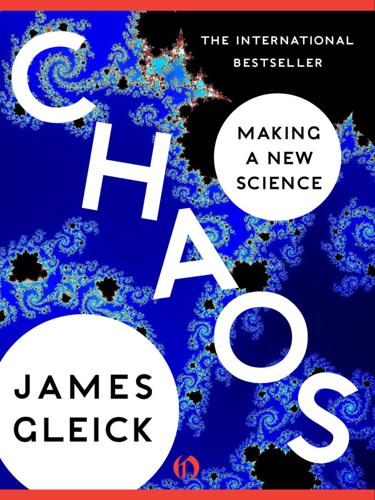
Chaos: Making a New Science
by
James Gleick
Published 18 Oct 2011
CHAOS Making a New Science James Gleick To Cynthia human was the music, natural was the static… —JOHN UPDIKE Contents Prologue The Butterfly Effect Edward Lorenz and his toy weather. The computer misbehaves. Long-range forecasting is doomed. Order masquerading as randomness. A world of nonlinearity. “We completely missed the point.” Revolution A revolution in seeing. Pendulum clocks, space balls, and playground swings. The invention of the horseshoe. A mystery solved: Jupiter’s Great Red Spot. Life’s Ups and Downs Modeling wildlife populations. Nonlinear science, “the study of non-elephant animals.”
…
The Butterfly Effect Physicists like to think that all you have to do is say, these are the conditions, now what happens next? —RICHARD P. FEYNMAN THE SUN BEAT DOWN through a sky that had never seen clouds. The winds swept across an earth as smooth as glass. Night never came, and autumn never gave way to winter. It never rained. The simulated weather in Edward Lorenz’s new electronic computer changed slowly but certainly, drifting through a permanent dry midday midseason, as if the world had turned into Camelot, or some particularly bland version of southern California. Outside his window Lorenz could watch real weather, the early-morning fog creeping along the Massachusetts Institute of Technology campus or the low clouds slipping over the rooftops from the Atlantic.
…
A small numerical error was like a small puff of wind—surely the small puffs faded or canceled each other out before they could change important, large-scale features of the weather. Yet in Lorenz’s particular system of equations, small errors proved catastrophic. HOW TWO WEATHER PATTERNS DIVERGE. From nearly the same starting point, Edward Lorenz saw his computer weather produce patterns that grew farther and farther apart until all resemblance disappeared. (From Lorenz’s 1961 printouts.) He decided to look more closely at the way two nearly identical runs of weather flowed apart. He copied one of the wavy lines of output onto a transparency and laid it over the other, to inspect the way it diverged.
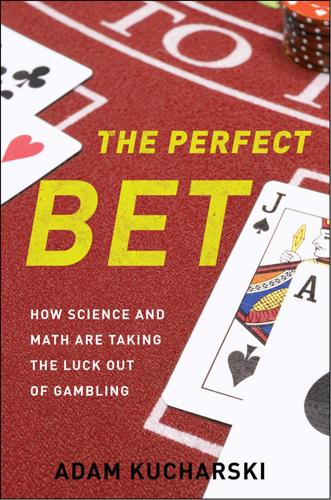
The Perfect Bet: How Science and Math Are Taking the Luck Out of Gambling
by
Adam Kucharski
Published 23 Feb 2016
“Humans are unable to participate in real time,” he said, “and instead, an ultrafast ecology of robots rises up to take control.” WHEN PEOPLE TALK ABOUT chaos theory, they often focus on the physics side of things. They might mention Edward Lorenz and his work on forecasting and the butterfly effect: the unpredictability of the weather, and the tornado caused by the flap of an insect’s wings. Or they might recall the story of the Eudaemons and roulette prediction, and how the trajectory of a billiard ball can be sensitive to initial conditions. Yet chaos theory has reached beyond the physical sciences. While the Eudaemons were preparing to take their roulette strategy to Las Vegas, on the other side of the United States ecologist Robert May was working on an idea that would fundamentally change how we think about biological systems.
…
The problem, which is known as “sensitive dependence on initial conditions,” means that even if we collect detailed measurements about a process—whether a roulette spin or a tropical storm—a small oversight could have dramatic consequences. Seventy years before mathematician Edward Lorenz gave a talk asking “Does the flap of a butterfly’s wings in Brazil set off a tornado in Texas?” Poincaré had outlined the “butterfly effect.” Lorenz’s work, which grew into chaos theory, focused chiefly on prediction. He was motivated by a desire to make better forecasts about the weather and to find a way to see further into the future. Poincaré was interested in the opposite problem: How long does it take for a process to become random?
…
Betting teams aren’t particularly interested in knowing why certain factors are important, but they do want to know how good their predictions are. It might seem easiest to test the predictions against the racing data the team had just analyzed. Yet this would be an unwise approach. Before he worked on chaos theory, Edward Lorenz spent the Second World War as a forecaster for the US Air Corps in the Pacific. One autumn in 1944, his team made a series of perfect predictions about weather conditions on the flight path between Siberia and Guam. At least they were perfect according to the reports from aircraft flying that route.
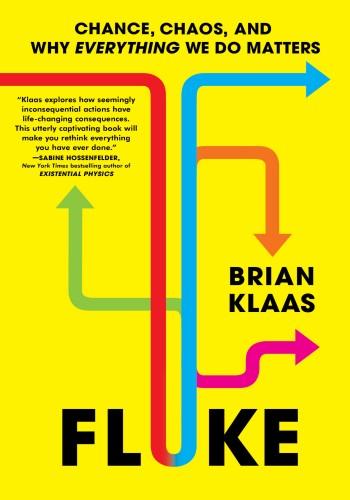
Fluke: Chance, Chaos, and Why Everything We Do Matters
by
Brian Klaas
Published 23 Jan 2024
Feldman, “Newton, Laplace, and Determinism,” in Chaos and Fractals: An Elementary Introduction (Oxford: Oxford University Press, 2012; online ed., Oxford: Oxford Academic, 17 December 2013). “upper air section”: “The Bulletin Interviews Professor Edward Lorenz,” MIT Bulletin 45 (2) (April 1996). LGP-30 computer: James Gleick, Chaos: Making a New Science (New York: Viking Books, 1987). chaos theory: Edward Lorenz, The Essence of Chaos (Seattle: University of Washington Press, 1995). “infinitely the most important”: Arthur Conan Doyle, The Adventures of Sherlock Holmes: Collins Classics (Glasgow, Scotland: William Collins, 2016).
…
And weather patterns are also comparable rather than being unique. It makes sense to compare thunderstorm cells across time and space, in a way that’s different from comparing the bin Laden raid to another raid in Somalia. But now for the problem: weather patterns are contingent. As we know from Edward Lorenz, the meteorological founding father of chaos theory, initial conditions matter enormously, so weather patterns will diverge more and more over time based on the smallest imaginable changes. The weather an hour from now is manageable risk, but because the system is sensitive to tiny, unpredictable fluctuations, it quickly becomes more uncertain the longer you gaze into the future.
…
Sherlock Holmes once quipped, “It has long been an axiom of mine that the little things are infinitely the most important.” Chaos theory proved Holmes right. Because small changes can make such a big difference, the universe will always appear uncertain, even random, to us. No matter the technological leaps we make, humans will never become Laplace’s demon. If there is a clockwork universe ticking away behind everything we see and experience, we will never fully understand it. Chaos theory meant that even those predictable billiard balls had to be reclassified as unpredictable. Even the slightly different pull created by the gravitational mass of human bodies standing near a billiard table would make the movement of a ball impossible to predict after it bounced off other balls six or seven times, which is why even a perfect bank shot can’t be planned beyond a few collisions.
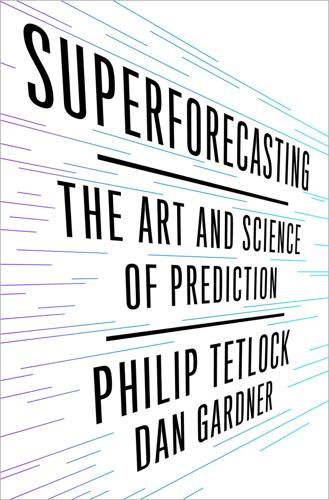
Superforecasting: The Art and Science of Prediction
by
Philip Tetlock
and
Dan Gardner
Published 14 Sep 2015
They may have been powder kegs but they never blew—until December 17, 2010, when the police pushed that one poor man too far. In 1972 the American meteorologist Edward Lorenz wrote a paper with an arresting title: “Predictability: Does the Flap of a Butterfly’s Wings in Brazil Set Off a Tornado in Texas?” A decade earlier, Lorenz had discovered by accident that tiny data entry variations in computer simulations of weather patterns—like replacing 0.506127 with 0.506—could produce dramatically different long-term forecasts. It was an insight that would inspire “chaos theory”: in nonlinear systems like the atmosphere, even small changes in initial conditions can mushroom to enormous proportions.
…
He meant that if that particular butterfly hadn’t flapped its wings at that moment, the unfathomably complex network of atmospheric actions and reactions would have behaved differently, and the tornado might never have formed—just as the Arab Spring might never have happened, at least not when and as it did, if the police had just let Mohamed Bouazizi sell his fruits and vegetables that morning in 2010. Edward Lorenz shifted scientific opinion toward the view that there are hard limits on predictability, a deeply philosophical question.4 For centuries, scientists had supposed that growing knowledge must lead to greater predictability because reality was like a clock—an awesomely big and complicated clock but still a clock—and the more scientists learned about its innards, how the gears grind together, how the weights and springs function, the better they could capture its operations with deterministic equations and predict what it would do.
…
We live in a world of clocks and clouds and a vast jumble of other metaphors. Unpredictability and predictability coexist uneasily in the intricately interlocking systems that make up our bodies, our societies, and the cosmos. How predictable something is depends on what we are trying to predict, how far into the future, and under what circumstances. Look at Edward Lorenz’s field. Weather forecasts are typically quite reliable, under most conditions, looking a few days ahead, but they become increasingly less accurate three, four, and five days out. Much beyond a week, we might as well consult that dart-throwing chimpanzee. So we can’t say that weather is predictable or not, only that weather is predictable to some extent under some circumstances—and we must be very careful when we try to be more precise than that.
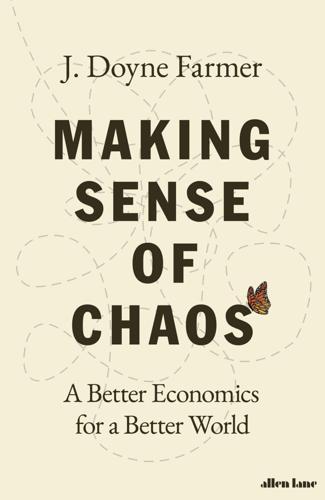
Making Sense of Chaos: A Better Economics for a Better World
by
J. Doyne Farmer
Published 24 Apr 2024
I became aware of the contest between subjective and numerical forecasters at its turning point, around 1980, while I was a graduate student doing research on chaotic dynamics. I had the good fortune to be asked to intern at the National Center for Atmospheric Research (NCAR) with Edward Lorenz, the pioneer of chaos theory and one of the leading meteorologists of his day. Since my internship was unpaid, to save money I camped illegally on the spectacular mesa that NCAR sits on, near Boulder, Colorado. My tent had to be hidden during the day, and because I was using NCAR’s supercomputer until late in the evening, it was a nuisance to set my tent up in the dark.
…
To my mind, it was dropped for the wrong reasons, and it’s time to bring it back. What is chaos? One evening in 1977, Robert Shaw, a fellow physics graduate student at Santa Cruz, appeared at our usual communal dinner in a state of excitement. He had just been introduced to meteorologist Edward Lorenz’s mathematical model, which featured a system of three simple equations and contained something called a strange attractor.17 Rob had programmed the equations on the computer – did we want to take a look? Rob tried to explain why he was so excited to Norman’s girlfriend, Lorna, who was not a physicist.
…
As the wind starts to blow, ripples form – not only are they small, but their shape is more or less regular. As the wind blows harder, the ripples turn into waves, which get bigger and bigger, and their motion becomes more and more irregular – the motion becomes turbulent. In a hurricane this becomes what is called fully developed turbulence. As Edward Lorenz realized, turbulence is due to chaotic dynamics. As soon as the movement of the ripples becomes irregular, the motion is chaotic. Turbulence corresponds to complicated chaos, with many degrees of freedom. Like financial markets, fluid turbulence exhibits clustered volatility and fat tails. In a market, the clustered volatility is due to irregular price movements; in a turbulent fluid flow, it’s due to the irregular motion of the fluid.
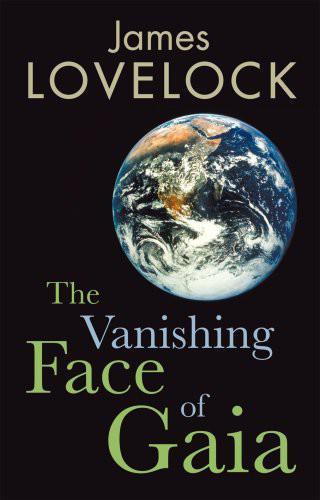
The Vanishing Face of Gaia: A Final Warning
by
James E. Lovelock
Published 1 Jan 2009
The mathematics of dynamic self‐regulating systems frequently involves differential equations that are difficult or impossible to solve by traditional methods. It is too easy to slip into the practice of making what are called ‘linearizing approximations’, and then forget their presence as the model evolves. Scientists of these separated disciplines should have realized that they were on the wrong track when quite independently the geophysicist Edward Lorenz, in 1961, and the neo‐Darwinist biologist Robert May, in 1973, made the remarkable discovery that deterministic chaos was an inherent part of the computer models they researched. Deterministic chaos is not an oxymoron, however much it may seem like one. Up until Lorenz and May started using computers to solve systems rich in difficult equations almost all science clung to the comforting idea put forward in 1814 by the French mathematician Pierre‐Simon Laplace that the universe was deterministic and if the precise location and momentum of every particle in the universe were known, then by using Newton’s laws we could reveal the entire course of cosmic events, past, present and future.
…
It took the discovery of the utter incomprehensibility of quantum phenomena to force the acceptance of a statistical more than a deterministic world; this was later consummated by the discoveries that came from the availability of affordable computers. These have enabled scientists to explore the world of dynamics – the mathematics of moving, flowing and living systems. The insights from the numerical analysis of fluid dynamics by Edward Lorenz and of population biology by Robert May revealed what is called ‘deterministic chaos’. Systems like the weather, the motion of more than two astronomical bodies linked by gravitation, or more than two species in competition, are exceedingly sensitive to the initial conditions of their origin, and they evolve in a wholly unpredictable manner.
…
Vernadsky was following a tradition set by Darwin, Huxley, Lotka, Redfield and many others, but unlike them his ideas were mostly anecdotal. Biosphere is now mainly used, in Vernadsky’s sense, as an imprecise word that acknowledges the power of life on Earth without surrendering human sovereignty. CHAOS THEORY Certainty and confidence in science marked its development in the nineteenth and much of the twentieth centuries, but now it carries on unaware that the determinism that had so long enlivened it is dead. The recognition that science was provisional and could never be certain was always there in the minds of good scientists.
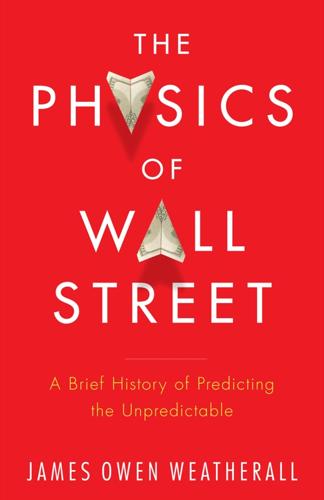
The Physics of Wall Street: A Brief History of Predicting the Unpredictable
by
James Owen Weatherall
Published 2 Jan 2013
.”: For an example of the kind of recommendation I have in mind, see Wheeler (2011). This letter is the origin of the quote “best men” in the next sentence. “. . . Silver City was a paradigm Western mining town”: This background on Silver City is from Wallis (2007). “. . . first developed by a man named Edward Lorenz”: The biographical and historical details concerning Lorenz and the history of chaos theory are from Gleick (1987) and Lorenz (1993). “. . . the work of two physicists named James Yorke and Tien-Yien Li . . .”: The article is Li and Yorke (1975). “. . . the so-called butterfly effect . . .”: The paper is Lorenz (2000). Lorenz never used the metaphor of a butterfly flapping its wings, though he sometimes used a similar metaphor involving a seagull
…
After a year in Idaho, though, Farmer was ready for bigger pastures. In 1970, he transferred to Stanford University. True to his ambitions, he majored in physics — laying the groundwork for a career that would change science, and finance, forever. The ideas at the heart of Farmer’s and Packard’s work were first developed by a man named Edward Lorenz. As a young boy, Lorenz thought he wanted to be a mathematician. He had a clear talent for mathematics, and when it came time to select a major at Dartmouth, he had few doubts about what he would choose. He graduated in 1938 and went on to Harvard, planning to pursue a PhD. But World War II interfered with his plans: in 1942, he joined the U.S.
…
A major contribution to the study of chaos theory was the realization that if a system is chaotic, these attractors have a highly intricate fractal structure. But despite these foundations, the subject was still young. Work had been done in fits and starts, without any real research center. Normally, graduate work in physics is a collaboration among graduate students, young postdoctoral researchers, and a professor. But chaos theory was still so new that these kinds of research groups didn’t yet exist. You couldn’t go to graduate school to study chaos theory. The Dynamical Systems Collective was an attempt to fix this, by pulling its members through graduate school by their bootstraps.
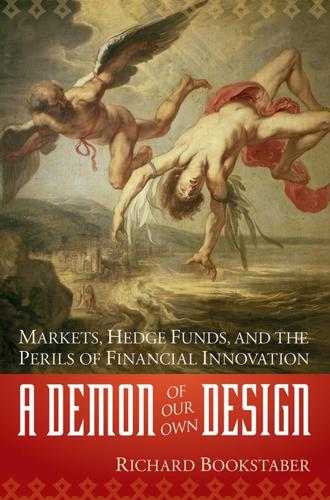
A Demon of Our Own Design: Markets, Hedge Funds, and the Perils of Financial Innovation
by
Richard Bookstaber
Published 5 Apr 2007
Unfortunately, while “almost” might work for horseshoes and hand grenades, 30 years after Godel and Heisenberg yet a third limitation of our knowledge was in the wings, a limitation that would close the door on any attempt to block out the implications of microscopic uncertainty on predictability in our macroscopic world. Based on observations made by Edward Lorenz in the early 1960s and popularized by the so-called butterfly effect—the fanciful notion that the beating wings of a butterfly could change the predictions of an otherwise perfect weather forecasting system—this limitation arises because in some important cases immeasurably small errors can compound over time to limit prediction in the larger scale.
…
This limitation could come into the forefront only with the dawning of the computer age, because it is manifested in the subtle errors of computational accuracy. The essence of the butterfly effect is that small perturbations can have large repercussions in massive, random forces such as weather. Edward Lorenz was a professor of meteorology at MIT, and in 1961 he was testing and tweaking a model of weather dynamics on a rudimentary vacuumtube computer. The program was based on a small system of simultaneous equations, but seemed to provide an inkling into the variability of weather patterns. At one point in his work, Lorenz decided to examine in more detail one of the solutions he had generated.
…
For his application in the narrow scientific discipline of weather prediction, this meant that no matter how precise the starting measurements of weather conditions, there was a limit after which the residual imprecision would lead to unpredictable results, so that “long-range forecasting of specific weather conditions would be impossible.” And since this occurred in a very simple laboratory model of weather dynamics, it could only be worse in the more complex equations that would be needed to properly reflect the weather. Lorenz discovered the principle that would emerge over time into the field of chaos theory, where a deterministic system generated with simple nonlinear dynamics unravels into an unrepeated and apparently random path. The simplicity of the dynamic system Lorenz had used suggests a farreaching result: Because we cannot measure without some error (harking back to Heisenberg), for many dynamic systems our forecast errors will grow to the point that even an approximation will be out of our hands.
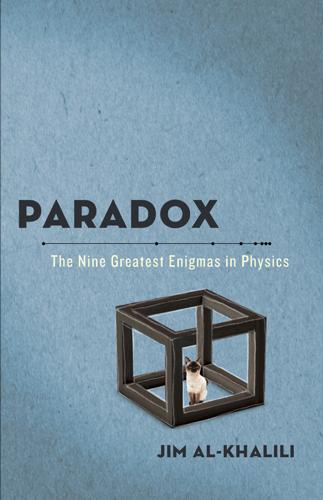
Paradox: The Nine Greatest Enigmas in Physics
by
Jim Al-Khalili
Published 22 Oct 2012
If you make a certain decision one morning on your way to work, like pausing for a second before crossing the road, then you might miss the opportunity of bumping into an old friend who gives you some information that leads to your applying for a new job that changes your life; a split second later still in crossing that road and you could be hit by a bus. Our destiny may be mapped out for us in a deterministic universe, but it is totally unpredictable. The man who first brought these ideas to the world and in doing so helped create the new concept of chaos was Edward Lorenz, an American mathematician and meteorologist who hit upon the phenomenon by accident while he was working on modeling weather patterns in the early 1960s. He was using an early “desktop” computer, the LGP-30, to run his simulation. At one point he wanted to repeat a simulation by running the computer program again with identical inputs.
…
Here is one definition of chaotic behavior: if a system behaves in a cyclical manner, repeating the same actions over and over again, but the way it evolves depends sensitively on its initial conditions, then it won’t pass through exactly the same state on each cycle but will appear to be behaving randomly, changing its path in a totally unpredictable way. Chaos is not really a theory as such (although “chaos theory” has become a commonly used term, and I still plan to use it). It is a concept, or phenomenon, that we find to be almost ubiquitous in nature and has spawned a whole new discipline in science with the rather less imaginative title of nonlinear dynamics—a description which derives from the main mathematical property of chaotic systems, namely that cause and effect are not related in a linear, proportional way.
…
By this I mean that it had been assumed before chaos was fully understood that, while effect must follow cause, simple causes would always lead to simple effects and complex causes to complex effects. The notion that a simple cause could lead to a complex effect was quite unexpected. This is what mathematicians mean by “nonlinear.” Chaos theory tells us that order and determinism can breed what appears to be randomness. In fact, it says that our universe can still be deterministic, obeying fundamental physical laws, while very often showing a tendency to become highly complex, disordered, and, most importantly, unpredictable. We now find chaos in almost every area of science.

The Secret War Between Downloading and Uploading: Tales of the Computer as Culture Machine
by
Peter Lunenfeld
Published 31 Mar 2011
The exactitude of Barr’s chart is unlikely to emerge from the process of bespoke futures. The skewing of the classic scenario-building process undermines such vectoral surety and fixed relationships. Instead, a better model might be found in the dynamic imagescapes of the Lorenz strange attractor, one of the earliest and still most potent visualizations of chaotic systems.26 Edward Lorenz, a mathematician and meteorologist at MIT, needed a new way to analyze atmospheric conditions. He came up with 117 CHAPTER 5 a dynamic model in which seemingly random and chaotic outliers were eventually contained within a definite figure (often described as looking like an owl’s eyes) in which solutions approach but do not replicate each other exactly.
…
This effect is readily visible when you watch an animation of the strange attractor, many of which are now available on the World Wide Web. Disequilibrium can fall into a dynamic equilibrium with a slight shift, and can again be thrown into a new disequilibrium by yet another shift. The strange attractor can be any point within an orbit that appears to pull the entire system toward it. Chaos theory is based in part on the fact that Newtonian paradigms of predictability do not actually work. Accepting nonlinear systems creates a challenge to scenario planning. Recasting scenario planning to create bespoke futures acknowledges the unpredictability of strange attractors, but hopes to use the process itself (as well as its result) to move the system toward a tipping point.
…
All hyperlinks current as of October 1, 2010 197 INDEX Adobe Systems, 55 Adstar, 177 Advanced Research Projects Agency (ARPA), 152, 158 Advertisement, 184nn12,15 bespoke futures and, 107 culture machine and, 175–177 stickiness and, 23, 31 unimodernism and, 52, 57, 59 Affordances, 183n4 bespoke futures and, 121, 124, 129, 136 stickiness and, 16–17, 24, 28–35 unimodernism and, 68, 75 Web n.0 and, 80–82, 90 Afghanistan, 100 African National Congress, 113 AfterSherrieLevine.com, 41–42 Agee, James, 40–42 Age of Aquarius, 159 Agribusiness, 4, 10 Airplanes, xiii Alessi, 64 Algorithms, 46, 144, 174–177 Allen, Paul, 164 “All You Need Is Love” (Beatles), 62 Al-Muhajiroun, 134 Al-Qaeda, 134 Altair personal computer, 161, 164 Alto personal computer, 162 Amazing Stories (comic book), 108–110 Amazon, 68, 99, 145 Amis, Kinsley, 32 Animation, 55–56, 58, 110, 118 Antiglobalization activists, 98 AOL, 9, 53, 99 Apartheid, 112–113 Apple, 144, 163–167, 172, 186n12 Appropriate scale, 57 Aquarians, 24, 152, 159, 168–169 description of term, xv Engelbart and, 144, 157–167 Kay and, 144, 157, 160–167, 195nn16,17 Nelson and, 168 networked computers and, xv Sutherland and, 160–161 Arcades, 15, 71 Architectural Forum magazine, 84 Ariadne, 11 Arnold, Matthew, 14 Ars Electronica, 169–170 Art nouveau, 44, 66 “As We May Think” (Bush), 149, 157 AT&T, 144, 195n10 Atari, 165 Atlantic Monthly, 149 Atomic age, 146 as catalyst, xi Cuban Missile Crisis and, xi description of, xv emergence of, xi–xii 198 Atomic age (continued) Hiroshima and, 100–101 Manhattan Project and, 150 mutually assured destruction and, xi terrorism and, 100–101 Avant-gardism, 31, 44, 61, 117–120, 133 Babbage, Charles, 149 Bakri Muhammad, Omar, 134–135 Bali, 100 Ballmer, Steve, 164 Balzac, Honoré de, 44 Banham, Reyner, 10 Barr, Alfred, 117–118 Bauhaus, 117 BBC, 10 Beatles, 54–55, 62 Bebop, 25–27 Beirut, Michael, 102 Bellamy, Edward, 108 Benjamin, Walter, 88 Berg, Alban, 45 Berlin Wall, xvi, 85, 97, 99, 104 Bernays, Edward L., 123–124 Berners-Lee, Tim, 144, 167–169, 175 Bespoke futures adopting future as client and, 110–113 anticipated technology and, 108–110 crafting, 113–116 design and, 102, 105–106, 110–111, 115–116, 119–120, 124–125, 137 downloading and, 97, 123, 132, 138 dynamic equilibrium and, 117–120 89/11 and, xvi, 97, 100–102, 105, 130 Enlightenment and, xvi, 129–139 information and, 98, 100–101, 124–126 lack of vision and, 106–108 markets and, 97–104, 118, 120, 127, 131–132, 137–138 MaSAI (Massively Synchronous Applications of the Imagination) and, xvi, 112, 120–123, 127, 193n32 199 modernists and, 105–108 mutants and, 105–108 networks and, 98–101, 108, 112–113, 116, 119–126, 133, 137 New Economy and, 97, 99, 104, 131, 138, 144–145, 190n3 participation and, 98–99, 120–121, 129 plutopian meliorism and, xvi, 127–129, 133, 137–138 prosumers and, 120–121 reperceiving and, 112–113 R-PR (Really Public Relations) and, 123–127 scenario planning and, 111–119, 191n19, 192n20 simulation and, 98, 121, 124, 126–127 strange attractors and, xvi, 117–120, 192n27 technology and, 98–104, 107–113, 116, 119, 125–127, 131–133, 136–139 television and, 101, 108, 124, 127–129, 133–137 unfinish and, 127–129, 136 uploading and, 97, 120–123, 128–129, 132 Best use, 10, 13–15, 138 Bezos, Jeff, 145 Bible, 28, 137 BitTorrent, 92 Black Album, The (Jay Z), 55 Blade Runner (Scott), 107 Blogger, 177 Blogosphere, xvii bespoke futures and, 101 culture machine and, 175, 177 Facebook and, 81, 145, 180n2 stickiness and, 30, 34 Twitter and, 34, 180n2 unimodernism and, 49, 68 Web n.0 and, 80, 92–93 INDEX Bohème, La (Puccini), 61 Boing Boing magazine, 68–69 Bollywood, 62 Bourgeoisie, 31 Bowie, David, 62 Braque, Georges, 93 Breuer, Marcel, 45 Brillat-Savarin, Jean Anthèlme, 3 Brin, Sergey, 144, 174–176 Broadband technology, 9, 57 Brownian motion, 49 Burroughs, Allie Mae, 40–42 Burroughs, William, 52 Bush, Vannevar, 52, 194n6 culture machine and, 144, 147–152, 157 Engelbart and, 157 Memex and, 108, 149–151 Oppenheimer and, 150 systems theory and, 151 war effort and, 150–151 Business 2.0 magazine, 145 C3I , 146–147 Cabrini Green, 85 Calypso, 25–27 Cambodia, 107 Cambridge, 17, 36 “Can-Can” (“Orpheus in the Underworld”) (Offenbach), 62 Capitalism, 4, 13 bespoke futures and, 97–100, 103–105 Sears and, 103–105 stickiness and, 13 unimodernism and, 66, 75 Web n.0 and, 90 Capitulationism, 7, 24, 30, 182n1 Carnegie, Andrew, 166 Casablanca (film), 90 Cassette tapes, 2 CATIA 3–D software, 39 Cell phones, xiii, xvii, 17, 23, 42, 53, 56, 76, 101 Chaos theory, 117–120 Chaplin, Charlie, 45 Cheney, Dick, 99 China, 104, 107 Christians, 135 Cicero, 47 Cinema, 8, 10 micro, 56–60 stickiness and, 15 unimodernism and, 47, 52, 56–60, 63, 71 Clarke, Arthur C., 174 CNN, 58 Cobain, Kurt, 62 Code breaking, 17–18 Cold war, 101 Cole, Nat King, 62 Commercial culture, 4–5, 8 bespoke futures and, 98, 102, 108, 120, 132–134 culture machine and, 153–156, 167, 170, 172, 175–177 copyright and, 54, 88–95, 123, 164, 166, 173, 177 Mickey Mouse Protection Act and, 90 open source and, 36, 61, 69, 74–75, 91–92, 116, 121–126, 144, 170– 173, 177, 189n12 propaganda and, 124 scenario planning and, 111–119 stickiness and, 23, 28–31, 37 unimodernism and, 41, 69 Web n.0 and, 82–86 Commercial syndrome, 85–86 Communism, 97–98, 103 Compact discs (CDs), 2, 48, 53 Complex City (Simon), 39 “Computable Numbers, On” (Turing), 18 Computer Data Systems, 145 Computers, xi.

Exploring Everyday Things with R and Ruby
by
Sau Sheong Chang
Published 27 Jun 2012
The pattern we have observed here, rather than emergent behavior, can be classified as a kind of “butterfly effect”; see the sidebar Butterfly Effect. Figure 8-6. Population fluctuation swings, resulting in extinction of the roids Butterfly Effect In chaos theory, the butterfly effect is the sensitive dependence on initial conditions, where a small change somewhere in a nonlinear system can result in large differences at a later stage. This name was coined by Edward Lorenz, one of the pioneers of chaos theory (and no relation to Max Lorenz of the Lorenz curve fame). In 1961, Lorenz was using a computer model to rerun a weather prediction when he entered the shortened decimal value .506 instead of entering the full .506127.
…
: (question mark, colon), in Ruby ternary conditional expression, if and unless > (right angle bracket), The R Console, Variables and Functions -> assignment operator, R, Variables and Functions > R console prompt, The R Console ' ' (single quotes), enclosing Ruby strings, Strings [ ] (square brackets), Vectors, Matrices, Data frames accessing subset of R data frame, Data frames enclosing R matrix indexes, Matrices enclosing R vector indexes, Vectors [[ ]] (square brackets, double), enclosing single R vector index, Vectors A aes() function, R, Aesthetics An Inquiry into the Nature and Causes of the Wealth of Nations (University of Chicago Press), The Invisible Hand apply() function, R, Interpreting the Data Armchair Economist (Free Press), How to Be an Armchair Economist array() function, R, Arrays arrays, R, Arrays–Arrays arrays, Ruby, Arrays and hashes–Arrays and hashes, Arrays and hashes artificial society, Money (see Utopia example) as.Date() function, R, Number of Messages by Day of the Month ascultation, Auscultation assignment operators, R, Variables and Functions at sign, double (@@), preceding Ruby class variables, Class methods and variables attr keyword, Ruby, Classes and objects Audacity audio editor, Homemade Digital Stethoscope average, Interpreting the Data (see mean() function, R) Axtell, Robert (researcher), It’s a Good Life Growing Artificial Societies: Social Science from the Bottom Up (Brookings Institution Press/MIT Press), It’s a Good Life B backticks (` `), enclosing R operators as functions, Variables and Functions bar charts, Plotting charts, Interpreting the Data–Interpreting the Data, The Second Simulation–The Second Simulation, The Third Simulation–The Third Simulation, The Final Simulation–The Final Simulation barplot() function, R, Plotting charts batch mode, R, Sourcing Files and the Command Line Bioconductor repository, Packages birds flocking, Schooling Fish and Flocking Birds (see flocking example) bmp() function, R, Basic Graphs Boids algorithm, Schooling Fish and Flocking Birds–The Origin of Boids Box, George Edward Pelham (statistician), regarding usefulness of models, The Simple Scenario break keyword, R, Conditionals and Loops brew command, Installing Ruby using your platform’s package management tool butterfly effect, The Changes C c() function, R, Vectors CALO Project, The Emailing Habits of Enron Executives camera, pulse oximeter using, Homemade Pulse Oximeter case expression, Ruby, case expression chaos theory, The Changes charts, Charting–Adjustments, Plotting charts, Statistical transformation, Geometric object, Interpreting the Data–Interpreting the Data, Interpreting the Data–Interpreting the Data, Interpreting the Data–Interpreting the Data, The Second Simulation, The Second Simulation–The Second Simulation, The Third Simulation–The Third Simulation, The Third Simulation–The Third Simulation, The Final Simulation–The Final Simulation, The Final Simulation–The Final Simulation, Analyzing the Simulation–Analyzing the Simulation, Analyzing the Second Simulation–Analyzing the Second Simulation, Number of Messages by Day of the Month–Number of Messages by Hour of the Day, Generating the Heart Sounds Waveform–Generating the Heart Sounds Waveform, Generating the Heartbeat Waveform and Calculating the Heart Rate–Generating the Heartbeat Waveform and Calculating the Heart Rate, Money–Money, Money–Money, Implementation bar charts, Plotting charts, Interpreting the Data–Interpreting the Data, The Second Simulation–The Second Simulation, The Third Simulation–The Third Simulation, The Final Simulation–The Final Simulation histograms, Statistical transformation, Geometric object, Money–Money line charts, Interpreting the Data–Interpreting the Data, Analyzing the Simulation–Analyzing the Simulation, Analyzing the Second Simulation–Analyzing the Second Simulation Lorenz curves, Money–Money scatterplots, Interpreting the Data–Interpreting the Data, The Second Simulation, The Third Simulation–The Third Simulation, The Final Simulation–The Final Simulation, Number of Messages by Day of the Month–Number of Messages by Hour of the Day, Implementation waveforms, Generating the Heart Sounds Waveform–Generating the Heart Sounds Waveform, Generating the Heartbeat Waveform and Calculating the Heart Rate–Generating the Heartbeat Waveform and Calculating the Heart Rate class methods, Ruby, Class methods and variables class variables, Ruby, Class methods and variables–Class methods and variables classes, R, Programming R classes, Ruby, Classes and objects–Classes and objects code examples, Using Code Examples (see example applications) colon (:), Symbols, Vectors creating R vectors, Vectors preceding Ruby symbols, Symbols comma-separated value (CSV) files, Importing data from text files (see CSV files) Comprehensive R Archive Network (CRAN), Packages conditionals, R, Conditionals and Loops conditionals, Ruby, Conditionals and loops–case expression contact information for this book, How to Contact Us conventions used in this book, Conventions Used in This Book cor() function, R, The R Console Core library, Ruby, Requiring External Libraries corpus, Text Mining correlation, R, The R Console CRAN (Comprehensive R Archive Network), Packages CSV (comma-separated value) files, Importing data from text files, The First Simulation–The First Simulation, The First Simulation, Interpreting the Data, The Simulation, Extracting Data from Sound–Extracting Data from Sound, Extracting Data from Video extracting video data to, Extracting Data from Video extracting WAV data to, Extracting Data from Sound–Extracting Data from Sound reading data from, Interpreting the Data writing data to, The First Simulation–The First Simulation, The Simulation csv library, Ruby, The First Simulation, The Simulation, Grab and Parse curl utility, Ruby Version Manager (RVM) D data, Data, Data, Everywhere–Data, Data, Everywhere, Bringing the World to Us, Importing Data–Importing data from a database, Importing data from text files, The First Simulation–The First Simulation, Interpreting the Data, How to Be an Armchair Economist, The Simulation, Grab and Parse–Grab and Parse, The Emailing Habits of Enron Executives–The Emailing Habits of Enron Executives, Homemade Digital Stethoscope–Extracting Data from Sound, Extracting Data from Sound–Extracting Data from Sound, Homemade Pulse Oximeter–Extracting Data from Video, Extracting Data from Video analyzing, Data, Data, Everywhere–Data, Data, Everywhere, Bringing the World to Us, How to Be an Armchair Economist charts for, How to Be an Armchair Economist (see charts) obstacles to, Data, Data, Everywhere–Data, Data, Everywhere simulations for, Bringing the World to Us (see simulations) audio, from stethoscope, Homemade Digital Stethoscope–Extracting Data from Sound CSV files for, Importing data from text files, The First Simulation–The First Simulation, Interpreting the Data, The Simulation, Extracting Data from Sound–Extracting Data from Sound, Extracting Data from Video from Enron, The Emailing Habits of Enron Executives–The Emailing Habits of Enron Executives from Gmail, Grab and Parse–Grab and Parse importing, R, Importing Data–Importing data from a database video, from pulse oximeter, Homemade Pulse Oximeter–Extracting Data from Video data frames, R, Data frames–Data frames data mining, The Idea data.frame() function, R, Data frames database, importing data from, Importing data from a database–Importing data from a database dbConnect() function, R, Importing data from a database dbGet() function, R, Importing data from a database DBI packages, R, Importing data from a database–Importing data from a database Debian system, installing Ruby on, Installing Ruby using your platform’s package management tool def keyword, Ruby, Classes and objects dimnames() function, R, Matrices distribution, normal, Money dollar sign ($), preceding R list item names, Lists doodling example, Shoes doodler–Shoes doodler double quotes (" "), enclosing Ruby strings, Strings duck typing, Ruby, Code like a duck–Code like a duck dynamic typing, Ruby, Code like a duck–Code like a duck E economics example, A Simple Market Economy–A Simple Market Economy, The Producer–The Producer, The Consumer–The Consumer, Some Convenience Methods–Some Convenience Methods, The Simulation–The Simulation, Analyzing the Simulation–Analyzing the Simulation, The Producer–The Producer, The Consumer–The Consumer, Market–Market, The Simulation–The Simulation, Analyzing the Second Simulation–Analyzing the Second Simulation, Price Controls–Price Controls charts for, Analyzing the Simulation–Analyzing the Simulation, Analyzing the Second Simulation–Analyzing the Second Simulation Consumer class for, The Consumer–The Consumer, The Consumer–The Consumer Market class for, Some Convenience Methods–Some Convenience Methods, Market–Market modeling, A Simple Market Economy–A Simple Market Economy price controls analysis, Price Controls–Price Controls Producer class for, The Producer–The Producer, The Producer–The Producer simulations for, The Simulation–The Simulation, The Simulation–The Simulation email example, Grab and Parse–Grab and Parse, The Emailing Habits of Enron Executives–The Emailing Habits of Enron Executives, Number of Messages by Day of the Month–Number of Messages by Day of the Month, Number of Messages by Day of the Month–Number of Messages by Hour of the Day, MailMiner–MailMiner, Number of Messages by Day of Week–Number of Messages by Hour of the Day, Interactions–Comparative Interactions, Text Mining–Text Mining charts for, Number of Messages by Day of the Month–Number of Messages by Hour of the Day content of messages, analyzing, Text Mining–Text Mining data for, Grab and Parse–Grab and Parse Enron data for, The Emailing Habits of Enron Executives–The Emailing Habits of Enron Executives interactions in email, analyzing, Interactions–Comparative Interactions number of messages, analyzing, Number of Messages by Day of the Month–Number of Messages by Day of the Month, Number of Messages by Day of Week–Number of Messages by Hour of the Day R package for, creating, MailMiner–MailMiner emergent behavior, The Origin of Boids (see also flocking example) Enron Corporation scandal, The Emailing Habits of Enron Executives Epstein, Joshua (researcher), It’s a Good Life Growing Artificial Societies: Social Science from the Bottom Up (Brookings Institution Press/MIT Press), It’s a Good Life equal sign (=), assignment operator, R, Variables and Functions Euclidean distance, Roids evolution, Evolution example applications, Using Code Examples, Shoes stopwatch–Shoes stopwatch, Shoes doodler–Shoes doodler, The R Console–Sourcing Files and the Command Line, Data frames–Introducing ggplot2, qplot–qplot, Statistical transformation–Geometric object, Adjustments–Adjustments, Offices and Restrooms, A Simple Market Economy, Grab and Parse, My Beating Heart, Schooling Fish and Flocking Birds, Money artificial utopian society, Money (see Utopia example) birds flocking, Schooling Fish and Flocking Birds (see flocking example) doodling, Shoes doodler–Shoes doodler economics, A Simple Market Economy (see economics example) email, Grab and Parse (see email example) fuel economy, qplot–qplot, Adjustments–Adjustments heartbeat, My Beating Heart (see heartbeat example) height and weight, The R Console–Sourcing Files and the Command Line league table, Data frames–Introducing ggplot2 movie database, Statistical transformation–Geometric object permission to use, Using Code Examples restrooms, Offices and Restrooms (see restrooms example) stopwatch, Shoes stopwatch–Shoes stopwatch expressions, R, Programming R external libraries, Ruby, Requiring External Libraries–Requiring External Libraries F factor() function, R, Factors, Text Mining factors, R, Factors–Factors FFmpeg library, Extracting Data from Video, Extracting Data from Video field of vision (FOV), Roids fish, schools of, Schooling Fish and Flocking Birds (see flocking example) flocking example, Schooling Fish and Flocking Birds–The Origin of Boids, The Origin of Boids, Simulation–Simulation, Roids–Roids, The Boid Flocking Rules–Putting in Obstacles, The Boid Flocking Rules–The Boid Flocking Rules, A Variation on the Rules–A Variation on the Rules, Going Round and Round–Going Round and Round, Putting in Obstacles–Putting in Obstacles Boids algorithm for, Schooling Fish and Flocking Birds–The Origin of Boids centering path for, Going Round and Round–Going Round and Round obstacles in path for, Putting in Obstacles–Putting in Obstacles research regarding, A Variation on the Rules–A Variation on the Rules Roid class for, Roids–Roids rules for, The Origin of Boids, The Boid Flocking Rules–The Boid Flocking Rules simulations for, Simulation–Simulation, The Boid Flocking Rules–Putting in Obstacles flows, Shoes, Shoes stopwatch fonts used in this book, Conventions Used in This Book–Conventions Used in This Book for loop, R, Conditionals and Loops format() function, R, Number of Messages by Day of the Month FOV (field of vision), Roids fuel economy example, qplot–qplot, Adjustments–Adjustments function class, R, Programming R functions, R, Variables and Functions–Variables and Functions G GAM (generalized addictive model), The Changes gem command, Ruby, Requiring External Libraries .gem file extension, Requiring External Libraries generalized addictive model (GAM), The Changes Gentleman, Robert (creator of R), Introducing R geom_bar() function, R, Interpreting the Data, The Second Simulation, The Final Simulation geom_histogram() function, R, Geometric object geom_line() function, R, Analyzing the Simulation geom_point() function, R, Plot, Interpreting the Data, Generating the Heart Sounds Waveform geom_smooth() function, R, Interpreting the Data ggplot() function, R, Plot ggplot2 package, R, Introducing ggplot2–Adjustments Gini coefficient, Money Git utility, Ruby Version Manager (RVM) Gmail, retrieving message data from, Grab and Parse–Grab and Parse graphics device, opening, Basic Graphs graphics package, R, Basic Graphs graphs, Charting (see charts) Growing Artificial Societies: Social Science from the Bottom Up (Brookings Institution Press/MIT Press), It’s a Good Life H hash mark, curly brackets (#{ }), enclosing Ruby string escape sequences, Strings hashes, Ruby, Arrays and hashes–Arrays and hashes heart, diagram of, Generating the Heart Sounds Waveform heartbeat example, My Beating Heart, My Beating Heart, My Beating Heart, Homemade Digital Stethoscope, Homemade Digital Stethoscope, Homemade Digital Stethoscope–Extracting Data from Sound, Generating the Heart Sounds Waveform–Generating the Heart Sounds Waveform, Generating the Heart Sounds Waveform, Finding the Heart Rate–Finding the Heart Rate, Homemade Pulse Oximeter–Homemade Pulse Oximeter, Homemade Pulse Oximeter–Extracting Data from Video, Generating the Heartbeat Waveform and Calculating the Heart Rate–Generating the Heartbeat Waveform and Calculating the Heart Rate, Generating the Heartbeat Waveform and Calculating the Heart Rate–Generating the Heartbeat Waveform and Calculating the Heart Rate charts for, Generating the Heart Sounds Waveform–Generating the Heart Sounds Waveform, Generating the Heartbeat Waveform and Calculating the Heart Rate–Generating the Heartbeat Waveform and Calculating the Heart Rate data for, Homemade Digital Stethoscope–Extracting Data from Sound, Homemade Pulse Oximeter–Extracting Data from Video audio from stethoscope, Homemade Digital Stethoscope–Extracting Data from Sound video from pulse oximeter, Homemade Pulse Oximeter–Extracting Data from Video heart rate, My Beating Heart, Finding the Heart Rate–Finding the Heart Rate, Generating the Heartbeat Waveform and Calculating the Heart Rate–Generating the Heartbeat Waveform and Calculating the Heart Rate finding from video file, Generating the Heartbeat Waveform and Calculating the Heart Rate–Generating the Heartbeat Waveform and Calculating the Heart Rate finding from WAV file, Finding the Heart Rate–Finding the Heart Rate health parameters for, My Beating Heart heart sounds, My Beating Heart, My Beating Heart, Homemade Digital Stethoscope, Generating the Heart Sounds Waveform health parameters for, My Beating Heart recording, Homemade Digital Stethoscope types of, My Beating Heart, Generating the Heart Sounds Waveform homemade pulse oximeter for, Homemade Pulse Oximeter–Homemade Pulse Oximeter homemade stethoscope for, Homemade Digital Stethoscope height and weight example, The R Console–Sourcing Files and the Command Line here-documents, Ruby, Strings hex editor, Extracting Data from Sound histograms, Statistical transformation, Geometric object, Money–Money Homebrew tool, Installing Ruby using your platform’s package management tool hyphen (-), Variables and Functions, Variables and Functions -> assignment operator, R, Variables and Functions <- assignment operator, R, Variables and Functions I icons used in this book, Conventions Used in This Book if expression, R, Conditionals and Loops if expression, Ruby, if and unless–if and unless Ihaka, Ross (creator of R), Introducing R ImageMagick library, Extracting Data from Video IMAP (Internet Message Access Protocol), Grab and Parse importing data, R, Importing Data–Importing data from a database inheritance, Ruby, Inheritance–Inheritance initialize method, Ruby, Classes and objects inner product, Roids–Roids installation, Installing Ruby–Installing Ruby using your platform’s package management tool, Installing Shoes–Installing Shoes, Introducing R, Installing packages–Installing packages R, Introducing R R packages, Installing packages–Installing packages Ruby, Installing Ruby–Installing Ruby using your platform’s package management tool Shoes, Installing Shoes–Installing Shoes Internet Message Access Protocol (IMAP), Grab and Parse Internet Message Format, The Emailing Habits of Enron Executives invisible hand metaphor, The Invisible Hand irb application, Running Ruby–Running Ruby J jittering, Adjustments jpeg() function, R, Basic Graphs L Landsburg, Stephen E.
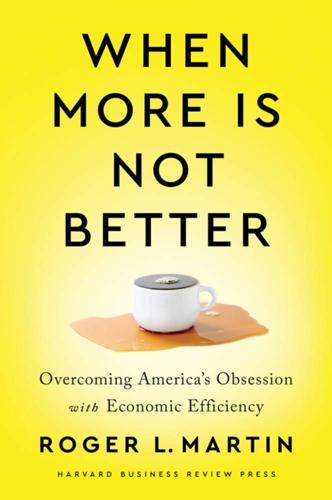
When More Is Not Better: Overcoming America's Obsession With Economic Efficiency
by
Roger L. Martin
Published 28 Sep 2020
In the relationships among family members, more attention or monetary inputs do not produce more affection in some predictable, forecastable, linear way. They don’t have zero impact, just not a linear or predictable one. This idea was captured in the fanciful title of a 1972 speech by one of the pioneers of chaos theory, mathematician Edward Lorenz: “Predictability: Does the Flap of a Butterfly’s Wings in Brazil Set Off a Tornado in Texas?” Following his speech, this idea became known as “the butterfly effect,” which is meant to signify how the causal relationships between factors in a system can be entirely mysterious and nonlinear.
…
Index AARP, 192 activist investors, 155, 158–159 adaptation, 82–83, 84, 103–106, 129–130, 142–143 AdSense, 154 Advanced Micro Devices, 129 Affordable Care Act, 92 agricultural workers, 192 Ahir, Hites, 82 almond industry, 73–75 Alphabet, 134 Amazon, 134, 192 American Dream, 2 American International Group (AIG), 137 analogic reasoning, 25–26 Anheuser-Busch InBev (ABI), 123–124 anomalies, 111–112 antitrust legislation, 53–56, 152, 153 Apple iOS, 131 Argyris, Chris, 167, 178 Aristotle, 183 Aspen Publishers, 77 AT&T, 53–54, 130–131 Atlanta testing scandal, 45–46, 53 Australia, 206 auto exports, 151 Avishai, Ellie, 171 Bain & Company, 175 balance, 183–184 balanced scorecard, 129 Bank Act (Canada), 139, 143 bank bailouts, 137–138 Bank Holding Company Act, 108 bankruptcies, 97–98, 137 banks, 137–142, 151 baseball, 101–102 Bass, Jo Ann, 116, 118 Belgium, 157 bell curve, 33, 72 See also Gaussian distribution Bernanke, Ben, 78, 79 bid-ask spreads, 55–56 Bieber, Justin, 65 Black Monday, 52 Blue Chip Economic Indicators forecast, 77–78, 82 bond market, 109–111 bond-rating agencies, 109–111 Boston Consulting Group, 175 Box, George, 25 boycotts, 189, 192 Bracken, Michael, 147–149 Bridgewater Associates, 31 Bristol University, 184 budgets, 124, 126, 173, 199–200 Buffett, Warren, 157 Bush, George W., 30 business adaptation in, 129–130 proxies in, 49–53 business executives, 113 agenda for, 115–135 backgrounds of, 120–121 reductionism and, 121–122 business models, 27–29 business schools, 32, 174–176, 180 business siloes, 32, 122 business strategy, 175–176 butterfly effect, 81 buycotts, 189, 192 buying groups, 192 buy recommendations, 112–113 cable TV, 130, 131 Canada antitrust policies in, 55 financial system of, 138–142, 151 metaphor for, 26 voter registration in, 205–206 capital efficiency, 97–99 capitalism, 4, 12 See also democratic capitalism discontent with, 12–13 survival of, 210 capital markets, 50, 55, 85, 86, 99, 109–110, 112, 129, 155 capital-markets policy, 55 Cargill, 133 cash flows, 97–98 central limit theorem, 35, 60 certainty, teaching, 170–173, 181, 185 Chambers, John, 51–52 chaos theory, 81 Chavez, Cesar, 192 Chicago Board of Trade, 64, 90 chief executive officers (CEOs), 64, 86–88, 121, 155 See also business executives China, 151, 210 Churchill, Winston, 26 circuit-breaker system, 108 Cisco Systems, 51–52 citizens, 114 agenda for, 187–207 collective action by, 192–197, 207 engagement of, 198–201 interviews of, 147–148 model of, 145 passive, 198 purchasing power of, 188–192, 207 reciprocal political relationships and, 197–200 responsibility of, 189–190 voting by, 201–206 civil-law system, 105–106 Clayton Antitrust Act, 53 Clinton, Bill, 54 cloud computing, 131 clustered industries, 67–70 collapsing sand pile example, 61–62 collective action, 192–197, 207 college students, 172–173 commercial banks, 108 common-law system, 105–106 communism, 15 comparative advantage, 40–41, 56 compensation theory, 146 competition, 63–65, 131–135, 151 competition policy, 53–54 competitive advantage, 67, 71 Competitive Advantage of Nations, The (Porter), 17, 67 complex adaptive systems, 80, 176–178, 182, 211–212 See also natural systems complexity design for, 100–103 teaching about, 176–177 complexity theory, 61–62, 81 Congressional Budget Office (CBO), 31, 78, 79 connectedness, 106–113 consensus estimates, 86, 87 Consensus Forecasts, 82 consolidation See also mergers industry, 71–73 consumer protection, 54 continuous adaptation, 82–83, 105–106 Contract with America, 198, 199 Costco, 125 Cowan, George, 177 Crawford, Cindy, 64, 65 creativity-intensive jobs, 68–70 Criterion-Referenced Competency Tests (CRCT), 45–46 customer experience, 117, 122–123 customer feedback, 130, 135 customer loyalty, 27–29, 48 customer value, 130 Dalio, Ray, 31 Darwin, Charles, 129–130 data directly observable, 178–181 interpretation of, 172, 178–179 Data Resources Inc.
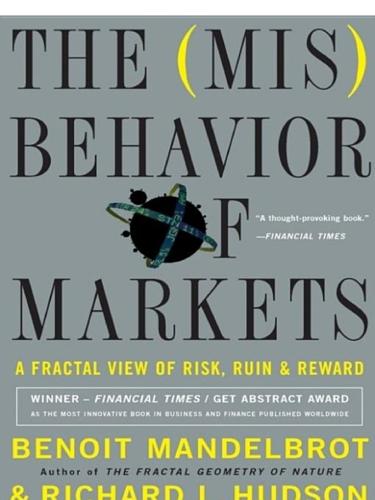
The Misbehavior of Markets: A Fractal View of Financial Turbulence
by
Benoit Mandelbrot
and
Richard L. Hudson
Published 7 Mar 2006
You can do this forever, and at each stage get an entirely different picture. Its study has become a classic problem in pure mathematics. The Mandelbrot set belongs to both fractal geometry and chaos theory. A chaotic system, far from being disorganized or non-organized, starts with one particular point and cranks it through a repeating process; the outcome is unpredictable if you do not know the process—and it depends heavily on the starting point. The most famous example of chaos was proposed by meteorologist Edward Lorenz in 1972: Can the flap of a butterfly’s wings in Brazil set off a tornado in Texas? The basic idea is that if you stand a pencil on its point and let it fall through force of gravity, exactly where it lands depends on where it began, whether it was leaning infinitesimally in one direction or another.
…
His manifesto, The Fractal Geometry of Nature, appeared in 1982 and became a scientific bestseller. Soon, T-shirts and posters of his most famous fractal creation, the bulbous but infinitely complicated Mandelbrot Set, were being made by the thousands. His ideas were also embraced immediately by another scientific movement, chaos theory. “Fractals” and “chaos” entered the popular vocabulary. In 1993, on receiving the prestigious Wolf Prize for Physics, Mandelbrot was cited for “having changed our view of nature.” MANDELBROT’S LIFE story has been a tale of roughness, irregularity,. and what he calls “wild” chance. He was born in Warsaw in 1924, and tutored privately by an uncle who despised rote learning; to this day, Mandelbrot says, the alphabet and times tables trouble him mildly.
…
This mathematics, called fractal geometry, has much to say in the natural sciences. It has helped model the weather, study river flows, analyze brainwaves and seismic tremors, and understand the distribution of galaxies. It was immediately embraced as an essential mathematical tool in the 1980s by “chaos” theory, the study of order in the seeming-chaos of a whirlpool or a hurricane. It is routinely used today in the realm of man-made structures, to measure Internet traffic, compress computer files, and make movies. It was the mathematical engine behind the computer animation in the movie, Star Trek II: the Wrath of Khan.
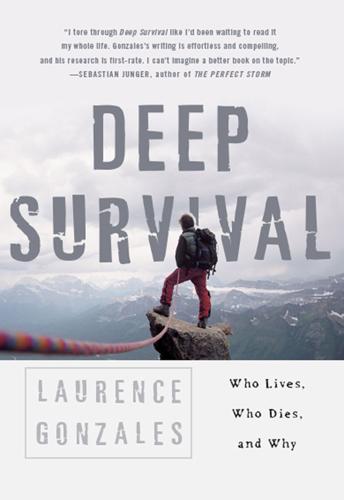
Deep Survival: Who Lives, Who Dies, and Why
by
Laurence Gonzales
Published 1 Dec 1998
The idea of chaos theory is that what appears to be a very complex, turbulent system (the weather, for example) can begin with simple components (water, air, earth), operating under a few simple rules (heat and gravity). One of the characteristics of such a system is that a small change in the initial conditions, often too small to measure, can lead to radically different behavior. Run the equations two, four, eight times, and they may seem to be giving similar results. But the harder you drive the system, the more iterations result and the more unpredictable it becomes. Edward Lorenz, a meteorologist at MIT, was modeling weather systems on a computer in the early 1960s when he accidentally discovered that a tiny change in the initial state (1 part in 1,000) was enough to produce totally different weather patterns.
…
The theory of self-organized criticality, sometimes called Complexity theory, was developed hard on the heels of chaos theory by some of the same people. It asked and suggested answers to questions as fundamental as: Where does order come from? How do you reconcile it with the second law of thermodynamics, which says that everything is heading toward more disorder? In a sense, complexity was an extension of the thinking that gave rise to chaos theory; indeed, it was often referred to as existing at “the edge of chaos.” (There has also been strong objection to linking complexity and chaos and to using the term “complexity.”) Like chaos theory, complexity theory postulated “upheaval and change and enormous consequences flowing from trivial-seeming events—and yet with a deep law hidden beneath.”
…
But the accident was still no one’s fault. There is no cause for such system accidents in the traditional sense, no blame, as the I Ching says. The cause is in the nature of the system. It’s self-organizing. WHEN NORMAL ACCIDENTS was published, neither chaos theory nor the theory of self-organizing systems was widely known or accepted. But it is possible to see hints of both in Perrow’s work. Chaos theory arose out of a huge vacuum in the physical sciences: disorder. We see it everywhere we look, from the functioning of a living organism to the behavior of flowing water: turbulence; erratic behavior; nonperiodic natural cycles from weather to animal populations.
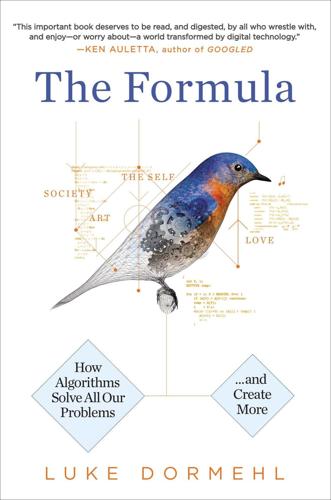
The Formula: How Algorithms Solve All Our Problems-And Create More
by
Luke Dormehl
Published 4 Nov 2014
I was never able to explain to his satisfaction that it all depends. Is this a change that can be made without altering any of the other variables that the neural network ranks upon? Very seldom is there a movie where any significant alteration doesn’t mean changes elsewhere.” To modify a phrase coined by chaos theory pioneer Edward Lorenz, a butterfly that flaps its wings in the first minute of a movie may well cause a hurricane in the middle of the third act. The studio boss to whom Meaney refers was likely picking a purposely arbitrary detail by mentioning the color of a character’s shirt. After all, who ever formed their opinion about which movie to go and see on a Saturday night, or which film to recommend to friends, on the basis of whether the protagonist wears a blue shirt or a red shirt?

Cold: Adventures in the World's Frozen Places
by
Bill Streever
Published 21 Jul 2009
But the data are not adequate. In 1963, Edward Lorenz set up weather models on a computer. He compared models run with data offering three decimal points of accuracy and those run with data offering six decimal points of accuracy. The results were completely different. Tiny differences in the starting point resulted in major differences at the end point. It would be comparable to a banker counting his wealth in dollars and in pennies, only to discover that he was well positioned in dollars but flat broke in pennies. It made no sense. It led to what was later called chaos theory. Lorenz delivered a talk to the American Academy for the Advancement of Science titled “Predictability: Does the Flap of a Butterfly’s Wings in Brazil Set Off a Tornado in Texas?”
…
Some sources suggest that Lorenz had planned to mention a seagull’s wings rather than a butterfly’s wings. Lorenz was swayed to the butterfly by another meteorologist, Philip Merilees. The ideas expressed in the talk — intended to explain why accurate weather forecasting is so challenging — led to a blossoming of the much-misunderstood chaos theory, popularized in books and movies, including Jurassic Park. The essence of chaos theory is that small differences in initial conditions can result in huge differences in subsequent outcomes. Lorenz died on April 16, 2008, at age ninety. James Glaisher wrote a full account of his balloon ascent, published on September 5, 1862, as “Greatest Height Ever Reached” in the British Association Report (1862, pp. 383–85).
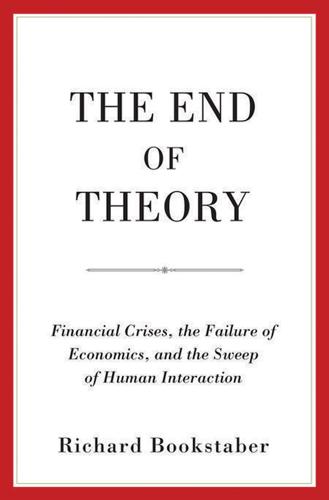
The End of Theory: Financial Crises, the Failure of Economics, and the Sweep of Human Interaction
by
Richard Bookstaber
Published 1 May 2017
The shorter the wavelength the greater the amount of energy that hits the electron and the more accurate the measurement, but the greater the energy hitting the electron the greater the impact on its velocity. 11. There is yet another limitation to knowing the present sufficiently to forecast, first propounded by Edward Lorenz (1963), and popularly illustrated by the “butterfly effect.” Lorenz showed that for many nonlinear systems even the slightest error in measurement will be compounded over time to cause a forecast to veer increasingly off course. 12. Soros (1987). Also see Soros (2013) and related articles in that issue, and the first two lectures in Soros (2010). 13.
…
Nonlinearity and Complexity Nonlinear systems are complex because a change in one component can propagate through the system to lead to surprising and apparently disproportionate effects elsewhere, for example, the famous “butterfly effect.” Indeed, as we first learned from Henri Poincaré’s analysis of the three-body problem in 1889, which later developed into the field of chaos theory, even simple nonlinear systems can lead to intractably complex results. The dominant and nearly inescapable form of nonlinearity for human systems is not strictly found in the social, organizational, or legal norms we follow, or in how people behave in a given environment; it is in the complexity of the dynamics, of the feedback cycle between these two.
…
See MGonz Chernobyl, nuclear accident of, 112 Church, Alonzo, 54 Citigroup, 11, 166 Clower, Robert, 85 cockroach, 68, 74; defense mechanism of, 66; and omniscient planner, 66–67 Coleman, Henry, 5 collateral: haircuts and, 131; risk reduction of, 204; transformations of, 131 commercial paper, 136 Commodity Futures Trading Commission (CFTC), 147–148 complexity: and chaos theory, 110–111; in comparison to computational irreducibility, 108, 122; description of, 109–112; and emergence, 108, 122; and ergodicity, 111, 122; and financial crises, 112 (see also financial crises); and informational irreducibility, 109–110; investigation of by Gotfried Wilhelm Leibniz, 109; and neoclassical economics, 123–124 (see also neoclassical economics); and network theory, 110; and nonlinear systems, 110–111; and the OODA loop, 122 (see also OODA Loop); and radical uncertainty, 112, 122; and strategic complexity, 122–124 computational irreducibility, 12, 18, 33; crises and, 105; and heuristics, 65; and the Library of Babel, 62–63; and maps, 26; and mathematical shortcuts, 26; and neoclassical economics, 83 (see also neoclassical economics); and three-body problem, 27–28 (see also three-body problem); and Turing’s halting problem, 55 computers, and the universal Turing machine, 54.
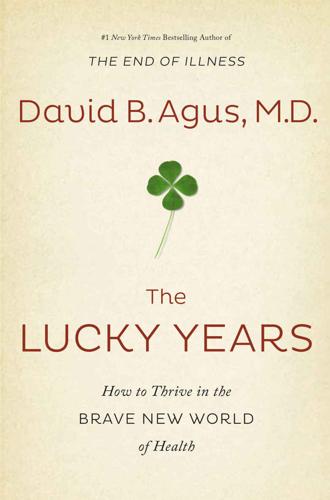
The Lucky Years: How to Thrive in the Brave New World of Health
by
David B. Agus
Published 29 Dec 2015
And that process begins by knowing who you are and, perhaps more important, how you feel. Flap Your Wings For every intervention you adopt, you create change. This was articulated beautifully by the late Edward Lorenz: when a butterfly flutters its wings in one part of the world, it can eventually cause a hurricane in another. Lorenz was an MIT meteorologist who tried to explain why it is so hard to make good weather forecasts; he wound up starting a scientific revolution called chaos theory. In the early 1960s, he noticed that small differences in a dynamic system such as the atmosphere could give rise to vast and often unexpected results. These observations ultimately led him to develop what became known as the butterfly effect, a term that grew out of an academic paper he presented in 1972 entitled “Predictability: Does the Flap of a Butterfly’s Wings in Brazil Set Off a Tornado in Texas?”
…
“nonself” in, 34 body mass index (BMI), 22, 134, 141 Boston, Mass., 84 Boston Cooking-School Cook Book, The, 178 Boston University, 47 Bowerman, Bill, 199 brain: decision making in, 227 sleep’s importance to, 208–10 brain cancer, 30 Brave New World (Huxley), viii, 159, 238 Brazil, 199 BRCA genes, 8, 21, 118 breast cancer, 8, 53, 55, 60, 61, 118, 171, 190, 211 genetic mutation and, 21–22 mastectomies and, 21–22 obesity and, 133 statin use and, 220 Breast Cancer Prevention Trial, 53 Brigham and Women’s Hospital, 84 Broad Institute of MIT and Harvard, 23, 24 Broedel, Max, 73 Brown University, 58 Brunet, Anne, 63 bubonic plague, 95–101 Bulletin of the New York Academy of Medicine, 2 butterfly effect, 236–37 California, 5, 12, 47, 103 tobacco control program in, 237 California, University of: at Berkeley, 25 at Irvine, 3 at San Francisco, 3 Caltech, 102 Cambridge, University of, 125, 134 Cameron, David, 67 Canada, 4, 11 cancer, 41, 108, 128, 175, 215, 237 aggressiveness of, 53–54 alternative treatments for, 18 aspirin and, 216–17 chemotherapy for, 29 childhood, 6, 49, 170–71 context and, 13–14 diet and, 163 early detection and treatment of, 172 fitness and, 190–94 genetic mutations and, 14, 21–22, 50 genotyping of, 117–18 immunotherapy for, 28–33 inflammation in, 175–77 lifestyle and, 153, 168–69 measurement of success in treating of, 32–33 metastasis in, 60–62 molecular therapies for, 23–24, 49–50, 54–55 muscle mass and, 195 p53 gene and, 57–58 Peto’s paradox and, 57 plasma transfusions and, 5 precision medicine and, 115 radiation therapy for, 29 random mutations in, 169–74, 176 as runaway cell copying, 59 self-seeding in, 61 statins and, 218–20 treatment resistance in, 190–91 Watson supercomputer and treatment of, 88–89 see also specific types of cancer cardiovascular disease, 86, 121, 128, 147, 216 airport noise and, 92 risk factors for, 47 Carlson, Mary, 212, 213 Carnegie Mellon University, 214 CAR T cells, 29–30 CBS This Morning, 67 CCR5 gene, 24, 25 Ceauşescu, Nicolae, 212–13 Celebrex (celecoxib), 62 celiac disease, 113, 164 cell division, 5 cells: death of (apoptosis), 59 endoplasmic reticulum in, 40 oxidative damage to, 40 receptors on, 59 Center for the Study of Aging and Human Development (Duke University), 45 Center for Translational Neuromedicine (University of Rochester), 208 Center for Translational Research in Aging and Longevity (University of Arkansas for Medical Sciences), 194 Centers for Disease Control and Prevention (CDC), 47, 103, 133, 205 ceritinib (Zykadia), 53 change, self-assessment of, past vs. future in, 38–40, 39 chaos theory, 236–37 Charaka, 113 Charlottesville Neurology and Sleep Medicine, 204 checkpoint blockage therapy, 29–30 chemotherapy, 29, 60, 190–91 exercise and, 191, 192 Chicago, University of, 17 children, obesity and overweight in, 133 Chittagong University, 232 cholera, 234 cholesterol, 150, 195, 217, 219 dietary vs. blood, 162 online calculator for, 218 chronic disease, 128–29 age-related, 128, 136 diet and, 141–44 management of, 144–46 overweight and, 141 sleep habits and, 147 chronological age, 45, 46, 46, 47, 135–36, 232 circadian rhythm, 123, 138, 139–40, 148, 205 Circulation, 86 climate change, 159 Clinical Practice Research Datalink, 219 clinical trials, 52 double-blind, 53, 155 IRBs and, 52 randomized, 52–53 ClinVar, 9 coarse graining, 229–32, 230 cognitive abilities, 45, 46 cognitive dissonance, 159 Cohen, Jacques, 111–12 colds, 205, 214 Cold War, 94 Coley, William B., 27–29, 28, 33, 48 colitis, 121–22 Collins, Francis, 114, 118 colonoscopies, 93 Colorado, 47 colorectal cancer, 55, 123–24, 190, 217 statin use and, 220 Columbia University, 138 complex carbohydrates, 162 comprehensive metabolic panel (CMP), 151 Congress, US, 114, 237 context: adapting to new data in, 159 aging and, 45 baselines for, 150 changes in, 22 databases as, 83, 91–94 data mining and, 101 diet and, 163, 165 disease and, 13–14, 20 genes and, 14, 20–21, 118 health and, 48, 76–78, 84, 89–90, 91–94, 101, 113, 114–15, 117, 124–25 heart disease and, 22 identifying and optimizing, 135–52 lab tests in, 150–52 medical data and, 78–82 medical education and, 75 Cooper Center Longitudinal Study, 192 coordination, 45 Cornell University, 2 coronary artery disease, 151 cortisol, 123 counterfeit drugs, 10–11 C-reactive protein, 175 CRISPR (Clustered Regularly Interspaced Short Palindromic Repeats), 24–25, 26, 45 Critical Care, 222 Crohn’s disease, 25, 121 CTLA-4, 29–30 cystic fibrosis, 115–16 Cystic Fibrosis Foundation Vertex, 115–16 cytokines, 123 cytoplasm, 111 cytosol, 40 Dana-Farber Cancer Institute, Profile program of, 118 Dannon, 235 Dartmouth College, 157 Darwin, Charles, 112 data, medical: context and, 78–82 individual’s role in collection of, 81 databases, medical, 82–83, 95 as context, 83, 91–94 security of, 88–89 data mining, 84–89, 92 context and, 101 infectious diseases and, 100–101 Davos, Switzerland, 161 Dawkins, Richard, 17 death, leading causes of, 129 death certificates, 96 decision-making, 225, 227–28 dehydration, 234 dementia, 5, 41, 90, 91, 151, 204, 210, 215, 221 see also Alzheimer’s disease depression, 122, 211, 215 exercise and, 186 Dhaka, 232 diabetes, 22, 24, 25, 47, 59, 108, 114, 123, 128, 147, 151, 166, 175, 186, 187, 188, 215, 221, 237 gut bacteria and, 120–21 incidence of, 120–21 diet, 22, 114 chronic disease and, 141–44 as contextual, 163 honesty about, 133–34 low-cholesterol, 162 low-fat, 162 moderation in, 144 research on, see nutritional studies weight and, 141 diphtheria, 161 disease: autoimmune, 85, 125, 175 context and, 13–14, 20 genetic markers for, 22, 113–14, 127 surrogate markers for, 127–28 see also chronic disease; infectious diseases; noncommunicable diseases disorders, inherited, newborn screening and, 12 DNA, see genes, genome DNA mismatch repair, 32, 57 docosahexaenoic acid (DHA), 182 dopamine, 211 Doudna, Jennifer A., 25 dreaming, 203 drug abuse, 22 drugs, see medications Duke Cancer Institute (DCI), 191 Duke University, 30 Center for the Study of Aging and Human Development at, 45 Dulken, Ben, 63 Dunedin Study, 45–47, 46 Dyerberg, Jorn, 182–83 Dyson, Esther, 173 Earls, Felton, 213 East Africa, 44, 107 Eat, Sleep, Poop (Cohen), 137 eating patterns, heart disease and, 138–40 Ebola, 18, 221–22 E. coli, 123 eicosapentaenoic acid (EPA), 182 Einstein, Albert, 2, 223 Elder, William, Jr., 115–16 electrodermal response, 230–31 Elledge, Stephen J., 84 emotions, touch and, 214 emulsifiers, microbiome and, 121–22 “end of history illusion,” 38–40, 39 End of Illness, The (Agus), 18 endoplasmic reticulum, 40 endorphins, 211 energy levels, 149 England, see Great Britain environment, see context epidemics: global spread of, 103 prediction of, 103–4 epigenetics, 20–21 esomeprazole (Nexium), 86 esophageal cancer, 217 estrogen, 64 ethics: genome editing and, 24–25 medical advances and, 10, 24 technology and, 25–26 Europe, 77 European Journal of Immunology, 34 exercise, 21, 114, 140, 185–201 chemotherapy and, 191, 192 honesty about, 133–34 ideal amount of, 196–200 intensity of, 197–98 life expectancy and, 189–90 mortality rates and, 148 Exeter, University of, 157 “Experimental Prolongation of the Life Span” (McCay, Lunsford, and Pope), 2 experimental treatments, quicker access to, 56 Facebook, 27 fasting lipid profile, 150 feebleness, aging and, 43 fertility, aging and, 43 Field, Tiffany, 214 financial industry, information technology and, 89 Finland, 220 fish oil, 182–83 Florida, 103 flu vaccine: misinformation about, 157–58 public distrust of, 160 FODMAPs (fermentable oligo-di-monosaccharides and polyols), 164 Fodor, George, 183 food, safety of, 11 Food and Drug Administration, US (FDA), 2, 18, 51, 55, 56, 86, 111, 112, 127–28, 146, 182, 201 Accelerated Approval provisions of, 128 Foundation Medicine, 50 Framingham Heart Study, 47, 118 Fred Hutchinson Cancer Research Center, 169 free radicals, 208 fruit flies, eating pattern studies with, 138–40 fungi, 119 gait, 45 galvanic skin response (GSR), 230–31 gastroesophageal reflux disease (GERD), 86 Gates, Bill, 2 Genentech, 56 genes, genome, 45, 83–84 aging and, 20, 41 bacterial, 107, 119 context and, 14, 20–21, 118 DNA mismatch repair and, 32 expression of, 20–21, 125, 139 mitochondrial, see mitochondrial DNA sequencing of, 20, 23, 49–52, 112 SNPs in, 113–14 as switches, 41 viruses and, 119–20 genes, genome, editing of, 24–25, 45 ethics of, 102–5 genetically modified foods (GMOs), 18 genetic markers, 22, 113–14, 127 genetic mutations: aging and, 41 cancer and, 14, 21–22, 50 disease risk and, 9, 12 genetic screening, 103, 117, 137 flawed results in, 8–10 of newborns, 11–12 Georgia State University, 121 Gewirtz, Andrew, 121 Gibson, Peter, 164 Gilbert, Daniel, 38, 39, 40 Gillray, James, 161 Gladwell, Malcolm, 225, 227, 228 Gleevec (imatinib), 55 glial cells, 209 glioblastoma, 30 “Global Recommendations on Physical Activity for Health” (WHO), 187 gluten, debate over, 163–65 Goldstein, Irwin, 211 Google, 87, 88, 101 Google Flu Trends, 101 Grameen Bank, 232, 233–34, 235 Grameen Danone, 235 Graunt, John, 100 Great Britain, 96, 97, 100, 110, 155 Black Death in, 95–101, 98, 99, 100 Greatist.com, 200 Greenland, 182 Grove, Andy, 7, 7 growth factors, 59 gun violence, 91 gut: inflammation of, 120, 122 microbiome of, see microbiome H2 blockers, 86 habits and routines, 136, 137–41, 228, 237–38 see also diet; lifestyle choices Harlow, Harry, 213 Harvard Medical School, 84 Harvard School of Public Health, 142–43 Harvard University, 3, 23, 24, 37, 178, 186, 196, 212, 213, 216 hash tables, health care and, 87–88 Hawaii, 47 HDL cholesterol, 150 health: biological age and, 47 context and, 48, 76–78, 84, 89–90, 91–94, 101, 113, 114–15, 117, 124–25 family history of, 136–37 honesty about, 131–34 inflection point in, 8 lifestyle and, see lifestyle choices optimism and, 65–69 personal baselines for, 150 retirement and, 91–92 technology and, 37–70 health and fitness apps, 200 Health and Human Services Department, US, 103 health care: Affordable Care Act and, 69–70 hash tables and, 87–88 individual’s responsibility in, 12–13, 26, 70, 75, 78, 131–32 misinformation about, 14–15, 18, 19, 154, 157–58 politics and, 11–12 portable electronic devices and, 79, 90–91 Health Professionals Follow-up Study, 142–43, 217 health threats, prediction of, 103–4 heart: biological age of, 47–48 health of, 48 heart attacks, 76, 86, 182, 217, 218 heart disease, 59, 128, 150, 166, 175, 183, 186, 187, 215, 217, 221 context and, 22 diet and, 163 eating patterns and, 138–40 lifestyle choices and, 22 muscle mass and, 195 heart rates, 231 heart rate variability (HRV), 230 Heathrow Airport, 92 “hedonic reactions,” 38–40 heel sticks, 11–12 hemoglobin A1C test, 151 hepatitis B, 175 hepatitis C, 175 Herceptin (trastuzumab), 55 high blood pressure, 22, 188, 195 high-sensitivity C-reactive protein (CRP) test, 151 hippocampus, 214 Hippocrates, 71, 113, 122, 216 HIV/AIDS, 18, 24, 25, 59, 84, 127–28, 131, 159 Hoffmann, Felix, 215, 216 Holland, 41 Homeland Security Department, US, 103 homeostasis, 137–38, 140 Homo sapiens, evolution of, 107 honesty: about health, 131–34 nutritional studies and, 162 hormones, 219 hormone therapy, 201 Horton, Richard, 178 Hospital for the Ruptured and Crippled (Hospital for Special Surgery), 28 house calls, 80 Houston Methodist, 86 “how do you feel” question, 231 hugs, 214 Human Genome Project, 113, 120 human growth hormone, 200 Human Molecular Genetics, 65 human papilloma virus (HPV), 161, 175 Hurricane Sandy, 84 Huxley, Aldous, viii, 6, 159, 238 Hydra magnipapillata, 42, 42 hyperglycemia, 122 hypertension, 125, 195, 203 IBM, 88–89 imatinib (Gleevec), 55 immune reactions, 5 immune system, 175, 190, 209, 211 aging and, 44 impact of hugs on, 214 immunotherapy, 28–33 polio virus and, 30, 31 incentives, 235–36 Indiana University Bloomington School of Informatics and Computing’s Center for Complex Networks and Systems Research, 94–95 infant mortality, 87, 97 infants: genetic screening of, 11–12 premature, 87 infections, 175–76 infectious diseases, 129 antibiotic-resistant, 67–69, 68 data mining and, 100–101 inflammation, 34, 151, 174–77, 181, 187, 190, 195, 215–22 inflammatory bowel disease, 121 inflection points, 7–8, 7 influenza, 161 risks from, 157 vaccine for, see flu vaccine information, sorting good from bad, 19–20 information technology, financial industry and, 89 inherited disorders, newborn genetic screening and, 12 insomnia, 122 Institute for Sexual Medicine, 211 insulin, 56, 190 insulin sensitivity, 5, 87, 120, 122, 151, 195 insurance companies, off-label drugs and, 55 Intel, 7 International Agency for Research on Cancer, 170 International Prevention Research Institute, 180 intuition, 224–29 Inuits, 182–83 in vitro fertilization (IVF), three-person, 109–12, 110 Ioannidis, John, 178 IRBs (institutional review boards), 52 iron deficiency, 231 irritable bowel syndrome (IBS), 164 Islam, 234 Italy, 183 ivacaftor (Kalydeco), 115–16 JAMA Internal Medicine, 142, 143, 192, 196 Jenner, Edward, 160, 161 Jobs, Steve, 2, 23–24, 26, 49 Johns Hopkins Hospital, 71, 72, 128 Hurd Hall at, 74 Osler Medical Housestaff Training Program at, 73–75, 74 Johns Hopkins Sidney Kimmel Comprehensive Cancer Center, 32 Johns Hopkins University, 23, 169, 170, 171, 173, 174, 175, 176, 215 Jolie, Angelina, 21 Jones, Owen, 43 Journal of Sexual Medicine, 211 Journal of the American Medical Association (JAMA), 72, 114–15, 173, 201, 220, 221 Journal of the American Osteopathic Association, 154 Journal of the National Cancer Institute, 169 Journal of Urology, 168 journals, medical, misinformation in, 154, 179 J.
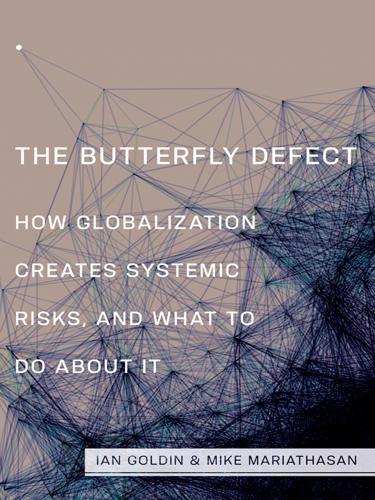
The Butterfly Defect: How Globalization Creates Systemic Risks, and What to Do About It
by
Ian Goldin
and
Mike Mariathasan
Published 15 Mar 2014
The butterfly effect has become widely known to signify systems in which a small change in one place can lead to major differences in a remote and unconnected system. The name of the effect has origins in the work of Edward Lorenz, who illustrated how a hurricane’s formation may be contingent on whether a distant butterfly had, days or weeks before, flapped its wings.1 The effect was subsequently taken up in chaos theory, which draws on a long tradition of examining the unexpected consequences of changes to initial conditions in physics. Our title draws on this evocative concept and focuses on the negative unintended ripple effect of individual or unrelated developments.
…
See management education butterfly defect, xiii–xiv butterfly effect, xiii, 80, 81 California: energy imports of, 140; environmental regulation in, 142 Cameron, Geoffrey, 197 capital flows: cross-border, 12, 19, 21f, 41; liberalization of, 12, 20f carbon dioxide. See greenhouse gas emissions Cash, Richard A., 159, 163–64 CDOs. See collateralized debt obligations CDSs. See credit default swaps central banks: European, 56, 59–60, 63; Icelandic, 37, 38–39; research at, 63; systemic risk measurements by, 59–60 chaos theory, xiii chemical weapons, 194, 254n80 Chen, Lincoln C., 159, 163–64 Chicago, Burnham Plan, 105 China: air pollution in, 137; domestic air travel in, 15–16, 17f; economic reforms in, 74–75; exports of, 16, 73–74, 74f, 75, 234n12; income inequality in, 172, 175f, 250n19; Internet use in, 193; MBA programs in, 87; political liberalization of, 74; rare earth element production in, 71, 71f; relations with Western countries, 11; SARS outbreak in, 144, 154; WTO membership of, 12 cholera, 145, 160–61 Cisco Visual Networking Index, 14 cities.

The Evolution of Everything: How New Ideas Emerge
by
Matt Ridley
The certainty of Laplace’s determinism eventually crumbled in the twentieth century under assault from two directions – quantum mechanics and chaos theory. At the subatomic level, the world turned out to be very far from Newtonian, with uncertainty built into the very fabric of matter. Even at the astronomical scale, Henri Poincaré discovered that some arrangements of heavenly bodies resulted in perpetual instability. And as the meteorologist Edward Lorenz realised, exquisite sensitivity to initial conditions meant that weather systems were inherently unpredictable, asking, famously, in the title of a lecture in 1972: ‘Does the flap of a butterfly’s wings in Brazil set off a tornado in Texas?’
…
It remains at least a convenient fiction, a skyhook from which to hang the practical necessities of the criminal justice system among other things. Perhaps, muses Cashmore, we inherit a belief in free will. These thinkers are in the tradition of determinism that goes back at least to Spinoza. But they escape the charge so often levelled at determinists, that they are fatalists. Remember the lesson of chaos theory, that tiny differences in initial conditions can result in hugely divergent outcomes. Given that every football match starts with the same number of players, roughly the same size of pitch, the same sort of ball and the same rules, is it not astounding that every game is unique? How much more unpredictable is a human life, full of chance encounters and missed opportunities?
…
252–3 Bronowski, Jacob, The Ascent of Man 214 Bronze Age 91 Brosius, Jürgen 69 Brown, Gordon 315 Bruckner, Pascal 274 Bruno, Giordano 12 Bryan, William Jennings 49, 284–5 Buccleuch, Henry Scott, 3rd Duke of 22 Buddha 257 Buddhism 259, 260 Bulwer-Lytton, Robert 196 Bureau of Economic Analysis 139 Burford, Oxfordshire 242 Bush, George W. 50, 290, 291, 293 Butler, Sir David 318 Butler, Samuel 127 Byron, George Gordon, 6th Lord 16, 248 California 201–2, 223, 225–8, 233–4, 236, 238, 302 Callaghan, James 295 Calvinists 142 Canada 32, 34, 170, 177, 284 Canberra 92 Cantillon, Richard 294 Cantillon Effect 294–5 Cape Horn 82 Carlyle, Thomas 216, 217 Carroll, Lewis, Through the Looking Glass 73 Carswell, Douglas 242, 243, 295, 314–16; The End of Politics and the Birth of iDemocracy 255 Cashmore, Anthony 148, 151 Castlereagh, Robert Stewart, Viscount 245 Castro, Fidel 252 Castro, José de, The Geopolitics of Hunger 209 Catholic Church 3 Catholics 142 Catmull, Ed 124 Cato Institute 179 Central African Republic 32 Cerf, Vint 301, 305 CERN, Switzerland 138 Chamberlain, Joseph 248 Chamberlain, Neville 248 chaos theory 18 Charles II 88 Charles V101 Charleton, Walter 13 Chartier, Emile (‘Alain’) 128 Chartists 245 Chase Manhattan 290 Cheltenham 91 Chen Yun 212 Chengdu 212 Chesterton, G.K. 268 Chiang Kai-shek 230–1 Chicago 171 China 87, 95, 105–6, 125, 181, 210, 213, 214, 217–19, 230–1, 259, 278, 288, 303, 305 Chinese Revolution 318 Chorley, Dave 265–6 Christianity 88, 258, 259, 260, 261, 263, 269, 274 Church of Jesus Christ of Latter Day Saints (Mormons) 89, 263 Churchill, Winston 197, 199, 217, 253, 295 Ciba Foundation 205 Cicero, Marcus Tullius 9 Cincinnati University 130 Clarendon, George Villiers, 4th Earl 195 Clark, Gregory 167 Clay, General Lucius 253 Cleese, John 42 Clemmer, Donald 237 Cleveland, Grover 284 climate change 271–6 Clinton, Bill 211, 291, 292, 293 Cloud, Michael 242 Club of Rome 211 Clydesdale Bank 281 Cobden, Richard 245–7, 249, 253 Cobden-Chevalier Treaty 247 Coca-Cola 112 Cold War 254, 302, 316 Colombia 232 Combine 115 Commercial Bank of Scotland 281 Communism 251, 252, 274, 303 The Communist Manifesto (Marx & Engels) 248 Communist Party 3 Community Reinvestment Act (US, 1977) 290 Company of Moneyers 279 Condliffe, John Bell 231 Condorcet, Marquis de 243, 244 Confucianism 259 Confucius 257 ‘Connect and Develop’ project 130 Conservative Foundation 204 Constable, John 63 Cooper’s Law 124 Copernicus, Nikolaus 12, 45 Corn Laws 246 Cornwallis, Charles 220–2 Cosmides, Leda 43 Coughlin, Father Charles 251 Coulson, Andrew 179 Cowperthwaite, Sir John 233–4 Creationists 50, 60 Crichton, Michael 273 Crick, Francis 59–60, 67, 121, 141, 145–6, 148, 271 Crimean War 245 Cromwell, Oliver 88, 242, 267 Cuba 303 culture: and cities 76, 91–3; and human revolution 82–5; and institutions 94–5; and language 79–82; and marriage 85–90; natural phenomena 76–8 Curry, Judith 272 cypherpunks 306–7 Cyprus 311 Dai, Wei 307 Dalai Lama 211 d’Alembert, Jean-Baptiste le Rond 142, 215 Daly, Martin 171 Damasio, Anthony 143 Dark Ages 88 Darrow, Clarence 49 Darwin, Charles 4, 9, 20, 37–8, 41, 42–5, 49–50, 52–4, 60, 110, 120, 196, 198, 319; The Descent of Man 79, 196–7 Darwin, Sir Charles Galton, The Next Million Years 204–5 Darwin, Erasmus 16; The Temple of Nature 16 Darwin, Leonard 199, 200 Darwin, Robert 245 Darwinism 52, 53–8, 73, 89, 110, 126, 128, 255 Davenport, Charles 201 Davies, Donald 301 Davies, Stephen 175–6, 189, 243 Dawkins, Richard 11, 44, 46, 53, 58, 65–8, 71, 268, 307; The Greatest Show on Earth 76; The Selfish Gene 66–7 De Filippi, Primavera 313 Dead Sea scrolls 261 Defoe, Daniel 94 Delgado, Pat 265–6 Delhi 185 Democratic Republic of Congo 32 Democritus 8, 14 Deng Xiaoping 212, 217–19 Denisovans 82 Denmark 32 Dennett, Daniel 7, 39, 40, 41, 53, 61, 65, 149–50, 151, 256–7; Darwin’s Dangerous Idea 42–3; Freedom Evolves 153 Dennis, Daniel 87 Descartes, René 12, 141, 145 Detroit 93 d’Holbach, Paul-Henri Thiry, baron 22; Le Système de la Nature 17 Dicey, A.V. 249 Diderot, Denis 20, 142, 215, 219; Encyclopédie 22; The Letter on the Blind and the Deaf 16; Philosophical Thoughts 16 Diggers 242 Disney 124 Disraeli, Benjamin 196 DNA 46, 56, 60, 61, 66–72, 78, 79, 145 Donne, John 15 Doolittle, Ford 67 Dover, Gabby, Dear Mr Darwin 73 Dover School District 50, 51 Down, Kevin 311 Draper, General William 206 Dread Pirate Roberts 311 Drucker, Peter, The Practice of Management 128–9 Dryden, John 11, 15 Durham University 311 Durkheim, Emile 165 Durkin, Martin 201 Dutch republic 101 Eagleman, David 151 East Asia 288 East Germany 300 East India Company 282n East India Company College 195 Easterly, William 100, 228–30 Economist 171 economy 4–5; and aid 229–33; background 96–8; commerce and freedom 243–4; consumerism 111–14, 129; and creationism 229; and creative destruction 107; diminishing returns 104–8; exchange 111; free trade and free thinking 244–6; friendly societies 115–16; health care 115–17; human action/human design 98–100; imperfect markets 100–3, 107–8; innovation 106, 108–10; invisible hand 103–4; perfect market 107; and the state 114–15; variation and selection 110–11 Ecuador 286 Edinburgh 91, 244 Edison, Thomas 119 education: compulsory 174–5; and economic growth 188–92; and indoctrination 187–8; innovation in 179–84; and private schools 176–9; Prussian model 175–6; technology of 184–7 Education Act (1870) 178 Egypt, Egyptians 86, 87, 101, 123, 190, 207, 259 Ehrlich, Paul 205, 209; The Population Bomb 207–8 Einstein, Albert 121, 180, 269 Eisenhower, Dwight D. 206 El Salvador 286 Elias, Norbert 29–30, 32, 33 Ellickson, Robert 236 Ellis, Havelock 197 Emilie, Marquise du Châtelet 15, 17 Empedocles 52 ENCODE 70–1 Encyclopaedia Britannica (1911) 216 Encyclopédie 142–3, 215, 216 Engels, Friedrich 194, 248 Enlightenment 64, 143, 215, 244, 272 Environment Defense Fund 204 Epicureans 40, 52 Epicurus 8, 14 Erhard, Ludwig 253 Ericsson 101 Ethereum 308, 313 Ethiopia 232 The Eugenics Record Office, Cold Spring Harbor (New York) 200 Europe 12, 29, 34, 82, 87, 103, 232, 247, 269, 303 European Union 35, 254 European Union Court of Justice 304–5 Evelyn, John 15 evolution: adaptation theory 2; cause and effect 3; definition 1; and evolutionary phenomena 4–5; general theory of 5–6; as gradual, incremental, undirected, emergent 1–2; special theory of 5; teaching of human history 2–3; world as self-organising/self-changing 5 Excite (search engine) 120 FARC (Revolutionary Armed Forces of Colombia) 240 fascism 251, 252, 253 Federal Deposit Insurance Corporation (FDIC) 287 Federal Home Loan Mortgage Corporation (‘Freddie Mac’) 289–94 Federal National Mortgage Association (‘Fannie Mae’) 289–94 Ferguson, Adam 4, 238 Ferguson, St Louis 240–1 Feynman, Richard 272 Fibonacci (Leonardo Binacci) 119 Figueres, Christiana 254 financial crisis (2008–09) 287–94, 307, 318 Financial Stability Board 254 Finland 32 Finn, Bernard 119 Finney, Hal 307, 310 First International Congress of Eugenics 199 First World War 198, 247, 248, 250, 318 Fisher, Simon 84 Flaubert, Gustave 9, 249 Fong, H.D. 230–1 Forster, W.E. 178 Fort Worth, Texas 136 The Fourth Revolution (Wooldridge & Micklethwait) 247 France 29, 101, 122, 138, 202, 247 Francis, Pope, Evangelii Gaudium 32 Franco-Prussian War 247 Frank, Barney 292 Franklin, Benjamin 20 Franklin, Rosalind 121 Frederick Augustus, Elector of Saxony, King of Poland 88 Frederick the Great 243 French Revolution 17, 243 Freud, Sigmund 156, 165, 269 Friedel, Robert 119 Friedman, Jeff 294 Friedman, Milton 306 Frisby, Dominic 115, 310, 312; Life After the State 294–5 Fulda, monastery at 12 Furberg, Sven 121 future, evolution of 317–20 Gaia 20, 256, 264, 269 Galaxy (search engine) 120 Galileo Galilei 12, 20 Galton, Francis 197 Gandhi, Indira 206–7 Gandhi, M.K.

Earth Wars: The Battle for Global Resources
by
Geoff Hiscock
Published 23 Apr 2012
As for China, du Plessis had little doubt that its long-term growth rate remained in place, “keeping China firmly in position as the world’s primary engine of growth.”17 This is the human element of the Earth wars, but there is a natural element at play as well. In classic chaos theory, tiny differences at the start of a sequence of events lead to vastly different outcomes—the so-called butterfly effect popularised by the U.S. mathematician and meteorologist Edward Lorenz in his work on computerised weather prediction in the 1960s. Lorenz, a professor emeritus at Massachusetts University of Technology (MIT) when he died in 2008 at the age of 90, wrote a paper in 1972 titled “Predictability: Does the Flap of a Butterfly’s Wings in Brazil Set Off a Tornado in Texas?”
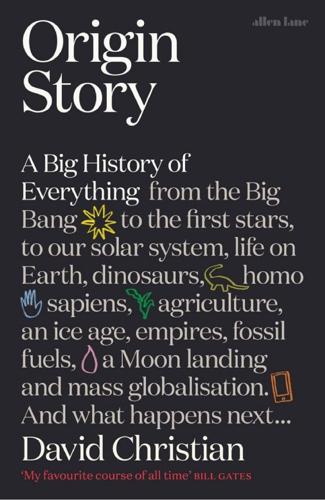
Origin Story: A Big History of Everything
by
David Christian
Published 21 May 2018
Today, scholars in many different fields seem to be converging on similar answers to the question of what makes us different. When you see sudden, rapid changes like this, start looking for tiny changes that have huge consequences. Complexity theory and the related field of chaos theory are full of changes like this. Often, they are described as butterfly effects. The metaphor comes from the meteorologist Edward Lorenz, who pointed out that in weather systems, tiny events (the flapping of a butterfly’s wings, perhaps?) can get amplified by positive feedback cycles, generating a cascade of changes that may unleash tornadoes thousands of miles away.
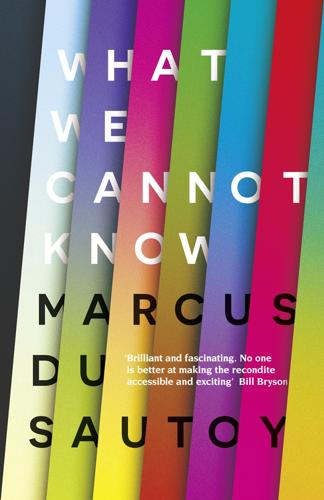
What We Cannot Know: Explorations at the Edge of Knowledge
by
Marcus Du Sautoy
Published 18 May 2016
THE DEVIL IN THE DECIMALS Despite Poincaré being credited as the father of chaos, it is striking that this sensitivity of many dynamical systems to small changes was not very well known for decades into the twentieth century. Indeed, it really took the rediscovery of the phenomenon by scientist Edward Lorenz, when he, like Poincaré, thought he’d made some mistake, before the ideas of chaos became more widely known. While working as a meteorologist at MIT in 1963, Lorenz had been running equations for the change of temperature in a dynamic fluid on his computer when he decided he needed to rerun one of his models for longer.
…
I will be meeting Polkinghorne in person in the Third Edge when I explore the unknowability inherent in his own scientific field of quantum physics. But he has also been interested in the gap in knowledge that the mathematics of chaos theory provides as an opportunity for his God to influence the future course of humanity. Polkinghorne has proposed that it is via the indeterminacies implicit in chaos theory that a supernatural intelligence can still act without violating the laws of physics. Chaos theory says that we can never know the set-up precisely enough to be able to run deterministic equations, and hence there is room in Polkinghorne’s view for divine intervention, to tweak things to remain consistent with our partial knowledge but still influence outcomes.
…
When I was a graduate student it was thought that with better and better computer power we would get better and better weather predictions because we knew the equations and we could make more realistic models of the Earth.’ But May is cautious not to let the climate change deniers use chaos theory as a way to undermine the debate. ‘Not believing in climate change because you can’t trust weather reports is a bit like saying that because you can’t tell when the next wave is going to break on Bondi beach you don’t believe in tides.’ May likes to quote a passage from Tom Stoppard’s play Arcadia to illustrate the strange tension that exists between the power of science to know some things with extraordinary accuracy and chaos theory, which denies us knowledge of many parts of the natural world. One of the protagonists, Valentine, declares: We’re better at predicting events at the edge of the galaxy or inside the nucleus of an atom than whether it’ll rain on auntie’s garden party three Sundays from now.

Human Frontiers: The Future of Big Ideas in an Age of Small Thinking
by
Michael Bhaskar
Published 2 Nov 2021
Yet building a complete picture of the subject is beyond the competencies of any individual or even discipline. Chaos theory may have originated with the use of computers to model the weather, but it ended up programming those computers, saving endangered species and forecasting global economic flows. It encompassed mathematics, meteorology, population ecology, epidemiology, physics and economics, underwritten by advances in computing and computer science and applied to topics as various as the organs of the human body, atmospheric storms and a beam of particles. Names like Edward Lorenz, Mary Cartright, Benoit Mandelbrot and Mitchell Feigenbaum were all closely connected, but it didn't have one great progenitor in the manner of a Darwin or Pasteur.
…
utm_source=twitterShare White, Curtis (2003), The Middle Mind: Why Americans Don't Think for Themselves, San Francisco: HarperSanFrancisco White, Curtis (2014), The Science Delusion: Asking the Big Questions in a Culture of Easy Answers, New York: Melville House Whitehead, A.N. (1925), Science and the Modern World, London: Macmillan Williams, Jeffrey J. (2018), ‘The Rise of the Promotional Intellectual’, The Chronicle of Higher Education, accessed 22 August 2018, available at https://www.chronicle.com/article/the-rise-of-the-promotional-intellectual/ Wilson, Edward O. (2017), The Origins of Creativity, London: Allen Lane Winchester, Simon (2008), The Man Who Loved China: The Fantastic Story of the Eccentric Scientist Who Unlocked the Mysteries of the Middle Kingdom, New York: HarperCollins Wolf, Martin (2019), ‘On the Technological Slowdown’, Foreign Affairs, accessed 14 July 2019, available at https://www.foreignaffairs.com/articles/2015-11-19/martin-wolf-innovation-slowdown Wong, May (2017), ‘Scholars say big ideas are getting harder to find’, Phys.org, accessed 10 October 2018, available at https://phys.org/news/2017-09-scholars-big-ideas-harder.html Wootton, David (2015), The Invention of Science: A New History of the Scientific Revolution, London: Allen Lane Wright, Robert (2000), Nonzero: History, Evolution and Human Cooperation, New York: Pantheon Books Wright, Ronald (2006), A Short History of Progress, Edinburgh: Canongate Wu, L., Wang, D., and Evans, J.A. (2019), ‘Large teams develop and small teams disrupt science and technology’, Nature 566, pp. 378–82 Wuchty, Stefan, Jones, Benjamin F., and Uzzi, Brian (2007), ‘The Increasing Dominance of Teams in Production of Knowledge’, Science, Vol. 316 No. 5827, pp. 1036–9 Xinhua (2019), ‘China to build scientific research station on Moon's south pole’, Xinhua, accessed 18 January 2021, available at http://www.xinhuanet.com/english/2019-04/24/c_138004666.htm Yueh, Linda (2018), The Great Economists: How Their Ideas Can Help Us Today, London: Penguin Viking Index ‘0,10’ exhibition 103 ‘0-I’ ideas 31 Aadhaar 265 abstraction 103 AC motor 287, 288 academia 209 Académie des sciences 47 Adam (robot) 235–6 Adams, John 211 Adler, Alfred 188 Adobe 265 Advanced Research Projects Agency (ARPA) 180, 247, 253, 296, 317 AEG 34 aeroplanes 62–6, 68–70, 71, 219 Aeschylus 3 Africa 267, 279–80, 295 age/ageing 122, 158–60, 193 AGI see artificial general intelligence Agrarian Revolution 252 agricultural production 92–3 AI see artificial intelligence Akcigit, Ufuk 193 Alexander the Great 159 Alexander, Albert 52 Alexandrian Library 4, 295, 304 algorithms 175, 185, 196, 224, 235, 245 aliens 240–1, 306, 308–9, 337 Allison, Jim 58 Alphabet 193, 225, 265, 294, 295 AlphaFold software 225–6, 227, 228–9, 233 AlphaGo software 226–7, 228, 233 AlQuraishi, Mohammed 225, 226, 229 Amazon 84–5, 214, 272 Amazon Prime Air 71 American Revolution 139 amino acids 223, 226 Ampère, André-Marie 74–5 Anaximander 35 ancestors 10–12 ancient Greeks 1–6, 7–8, 291, 303–4 Anderson, Kurt 106 Angkor Wat 43 anthrax 47–8, 51 Anthropocene 14–15 anti-reason 211–12 anti-science 211–12 antibacterials 234 antibiotics 38, 52–3, 124, 125, 217, 315 resistance to 235 Apollo missions 70, 315, 316, 317, 318 Apple 33, 85, 159, 185, 186, 193, 272, 296, 312 Aquinas, Thomas 36 AR see augmented reality archaeology 153–4 Archimedes 1–6, 7–8, 19, 27, 32, 37, 39, 291, 304 architecture 103, 115, 188 ARIA 297 Aristarchus 5 Aristotle 24, 108, 282, 304 Arkwright, Richard 25, 26, 34, 253 Armstrong, Louis 103 ARPA see Advanced Research Projects Agency art 99–104, 107–8, 176–7, 236, 321, 339 Artemis (Moon mission) 71, 218 artificial general intelligence (AGI) 226, 237–8, 249, 250, 310, 313, 330, 341 artificial intelligence (AI) 225–9, 233–41, 246–7, 248, 249–52, 262, 266, 300, 310, 312–13, 323, 329, 330, 331, 338 arts 152, 293 see also specific arts Artsimovich, Lev 147 arXiv 116 Asia 264, 267–8, 273, 275 Asimov, Isaac, Foundation 45 Astor, John Jacob 288 astronomy 30, 231, 232 AT&T 85, 181, 183, 185, 197 Ates, Sina T. 193 Athens 24, 295 Atlantis 154 augmented reality (AR) 241–2, 338 authoritarianism 112–13, 284 autonomous vehicles 71, 72, 219 ‘Axial Age’ 108 Azoulay, Pierre 317–18 Bach, J.S. 236 bacillus 46 Bacon, Francis 25, 259 bacteria 38, 46, 53 Bahcall, Safi 31 Ballets Russes 99–100 Baltimore and Ohio railway 67 Banks, Iain M. 310 Bardeen, John 182 BASF 289 Batchelor, Charles 286 Bates, Paul 226 Bayes, Thomas 289 Beagle (ship) 36 Beethoven, Ludwig van 26 Beijing Genomics Institute 257, 294–5 Bell Labs 180–4, 186–8, 190, 206, 214, 217, 289, 296, 322 Benz, Karl 68, 219, 330 Bergson, Henri 109 Bessemer process 80 Bezos, Jeff 71, 326 Bhattacharya, Jay 201, 202, 321 Biden, Joe 59 Big Bang 117, 174, 181 Big Big Ideas 79–80 big ideas 5, 8, 11, 13–19 adoption 28 and an uncertain future 302–36 and art 99–103 artificial 223–38 and the Big Ideas Famine 13 and bisociation 36 blockers to 17–18 and breakthrough problems 46–73, 77, 86, 98, 222, 250, 301 and the ‘burden of knowledge’ effect 154–65, 175, 178, 235, 338 and business formation 95 ceiling 18 conception 37 definition 27–8, 40–1 Enlightenment 132–40, 136–40 era of 109–10 erroneous 176 evidence for 222, 223–54 execution 37 ‘fishing out’ mechanism 152 future of 45, 98, 302–36, 337–43 harmful nature 41–2 how they work 23–45 and the Idea Paradox 178–9, 187, 191, 217, 226, 250, 254, 283–4, 301, 312, 342 and the Kardashev Scale 337–43 long and winding course of 4, 5, 35–8, 136 and the low-hanging fruit paradox 149–54, 167, 178 and luck 38–9 moral 136, 138 nature of 169–72 necessity of 41–3 need for 42–3 normalisation of 171–5, 178 originality of 28 paradox of 143–79 and patents 97 process of 37–8 purchase 37–8 and resources 128 and rights 132–40 and ‘ripeness’ 39 and short-termism 192 slow death of 106–7 slowdown of 98 society's reaction to 216 and specialisation 156, 157–8 today 21–140 tomorrow 141–343 big pharma 31, 60, 185, 217–18, 226 Big Science 118–19 Bill of Rights 137 Bingham, Hiram 153 biology 243–8, 300 synthetic 245–6, 251, 310, 329 BioNTech 218, 298 biotech 195–6, 240, 246, 255–8, 262, 266, 307 bisociation 36 Björk 104 Black, Joseph 26 ‘black swan’ events 307, 310 Bletchley Park 180, 296 Bloom, Nick 91, 92, 93 Boeing 69, 72, 162, 165, 192, 238 Bohr, Niels 104, 118, 159 Boltsmann, Ludwig 188 Boston Consulting Group 204 Botha, P.W. 114 Bowie, David 107 Boyer, Herbert 243 Boyle, Robert 232 Brahe, Tycho 36, 229, 292 brain 166, 246–8, 299–300 collective 299, 300–1 whole brain emulations (‘ems’) 248–9, 341 brain drains 197 brain-to-machine interfaces 247–8 Branson, Richard 71 Brattain, Walter 182 Brazil 266–7, 268, 279 breakthrough organisations 294–9 breakthrough problems 46–73, 77, 86, 98, 222, 234, 250, 301 breakthroughs 2–5, 27–8, 32–7, 41, 129, 152, 156 and expedition novelty 333 hostility to 187 medical 58–60 missing 175 near-misses 160 nuclear power 145 price of 87–98 and short-termism 192 slowdown of 87, 94 society's reaction to 216 and universities 204 see also ‘Eureka’ moments breast cancer 94 Brexit referendum 2016: 208 Brin, Sergey 319, 326 Britain 24, 146, 259, 283, 297 see also United Kingdom British Telecom 196 Brunel, Isambard Kingdom 67 Brunelleschi 232 Bruno, Giordano 216 Buddhism 108, 175, 264–5, 340 Buhler, Charlotte 188–9 Buhler, Karl 188–9 ‘burden of knowledge’ effect 154–65, 175, 178, 235, 338 bureaucracy 198–87, 280–1 Bush, George W. 211 Bush, Vannevar 168, 314–15, 317 business start-ups 95–6 Cage, John 104 Callard, Agnes 111 Caltech 184 Cambridge University 75, 76, 124, 235–6, 257, 294–6 canals 67 cancer 57–61, 76, 93–4, 131, 234, 245, 318 research 59–61 capital and economic growth 88 gray 192, 196 human 275, 277 capitalism 36, 111–13, 186, 189, 191–8 CAR-Ts see chimeric antigen receptor T-cells carbon dioxide emissions 220–1 Cardwell's Law 283 Carey, Nessa 244 Carnap, Rudolf 189 Carnarvon, Lord 153 cars 289 electric 71 flying 71 Carter, Howard 153 Carter, Jimmy 58 Carthage 3, 43 Cartright, Mary 163 CASP see Critical Assessment of Protein Structure Prediction Cassin, René 135 Catholic Church 206, 230 Cavendish Laboratory 76, 294 Cell (journal) 234 censorship 210–11 Census Bureau (US) 78 Centers for Disease Control 212 Cerf, Vint 253 CERN 118, 233, 239, 252, 296 Chain, Ernst 52, 60, 124 Champollion, Jean-François 155 Chang, Peng Chun 135 change 10–13, 18–19, 24 rapid 30, 32 resistance to 222 slowdown 85 chaos theory 163 Chaplin, Charlie 104 Chardin, Pierre Teilhard de 300 Charpentier, Emmanuelle 244, 256 chemistry 49, 56, 104, 117, 118, 124, 149–50, 159, 241, 244 chemotherapy 57 Chicago 10 chicken cholera 46 chimeric antigen receptor T-cells (CAR-Ts) 58, 61 China 15, 25, 71–2, 111, 112, 138, 208, 213, 216, 255–64, 265, 266, 267, 268, 275, 277, 279, 280, 283, 284–5, 312, 313, 314, 319, 328 Han 259, 260 Ming 284, 308, 309 Qing 260 Song 24, 259–60, 306 Tang 259–60 Zhou 259 Christianity 108, 303–4, 340 Church, George 245 cities 270–2, 308–9, 340 civilisation collapse 42–4 decay 187 cleantech 195 climate change 219–21, 284, 313–14, 338 clinical trials 218 cliodynamics 339 coal 23, 24, 26, 80, 220 Cocteau, Jean 101 cognitive complexity, high 332–3 cognitive diversity 281–3 Cognitive Revolution 252 Cohen, Stanley N. 243, 244 collective intelligence 339 collectivism 282 Collison, Patrick 117, 272 colour 75 Coltrane, John 104 Columbian Exchange 177 Columbus 38 comfort zones, stepping outside of 334 communism 111, 133, 134, 173, 217, 284 companies creation 95–6 numbers 96–7 competition 87, 283 complacency 221–2 complexity 161–7, 178, 204, 208, 298, 302, 329 high cognitive 332–3 compliance 205–6 computational power 128–9, 168, 234, 250 computer games 107 computers 166–7, 240, 253 computing 254 see also quantum computing Confucianism 133, 259 Confucius 24, 108, 109, 282 Congressional Budget Office 82 connectivity 272 Conon of Samos 4 consciousness 248, 340 consequences 328–9 consolidation, age of 86 Constantine 303 convergence 174, 311–12 Copernicus 29, 30, 41, 152, 171, 229, 232, 292 copyright 195 corporations 204–5 cosmic background microwave radiation 117, 181 cotton weaving, flying shuttle 24–5 Coulomb, Charles-Augustin de 74–5 counterculture 106 Covid-19 (coronavirus) pandemic 13, 14, 15, 55, 86, 113–14, 193, 202, 208, 212, 218, 251–2, 263, 283–4, 297–8, 309, 318, 327 vaccine 125, 245 Cowen, Tyler 13, 82, 94–5, 221 cowpox 47 creativity 188, 283 and artificial intelligence 236 crisis in 108 decrease 106–8 and universities 203 Crete 43 Crick, Francis 119, 296 CRISPR 243, 244, 251, 255–8, 299 Critical Assessment of Protein Structure Prediction (CASP) 224–6, 228 Cronin, Lee 242 crop yields 92–3 cultural diversity 281–3 cultural homogenisation 177 cultural rebellion 106–7 Cultural Revolution 114, 305 culture, stuck 106 Cunard 67 Curie, Marie 104, 144, 203, 289–90, 332 Daniels, John T. 62–3 Daoism 259 dark matter/energy/force 338 DARPA see Defense Advanced Research Projects Agency Darwin, Charles 34, 35–6, 37–8, 41, 77, 109, 118, 171, 289 Darwin, Erasmus 35 data 233 datasets, large 28 Davy, Sir Humphrey 149, 150 Debussy, Claude 100–1 decision-making, bad 43–4 Declaration of Independence 1776: 137 Declaration of the Rights of Man and Citizen 1789: 137 DeepMind 225–9, 296 Defense Advanced Research Projects Agency (DARPA) 315 democracy 111–12 Deng Xiaoping 261 deoxyribonucleic acid (DNA) 119, 223–4, 243, 251, 255, 339 DNA sequencing 56 Derrida, Jacques 109 Deutsch, David 126, 203 Diaghilev, Sergei 99–101 Diamond, Jared 42 Digital Age 180 digital technology 241–2, 243 diminishing returns 87, 91, 94, 97, 118, 123, 126, 130–1, 150, 161, 169, 173, 222, 250, 276, 285, 301 Dirac, Paul 159–60 disruption 34, 96, 109, 119, 157 diversity, cultural 281–3 DNA see deoxyribonucleic acid Dorling, Danny 171 Doudna, Jennifer 244, 251, 256 Douglas, Mary 290 Douthat, Ross 14, 106 drag 65 Drake equation 306 Drezner, Daniel 214 drones, delivery 71, 72 Drucker, Peter 189 drugs 55–7, 124, 235 Eroom's Law 55, 57, 61, 92–3, 119, 161, 234, 245, 338 and machine learning 234 research and development 55–7, 61, 92–4, 119, 161, 172–3, 217–18, 234, 245, 315, 338 see also pharmaceutical industry Duchamp, Marcel 103, 171 DuPont 184 Dutch East India Company 34 Dyson, Freeman 120 dystopias 305–8 East India Company 34 Easter Island 42–3 Eastern Europe 138 ecocides 42–3 economic growth 240, 272, 273, 316 endogenous 94 and ideas 88, 89–92, 95 process of 87–8 slowdown 82, 83, 84, 85, 178 economics 87–9, 98, 339, 340 contradictions of 87 Economist, The (magazine) 188 Edelman annual trust barometer 209 Edison, Thomas 183–4, 286–9, 290, 293 education 127, 277, 324–8 Einstein, Albert 11, 29, 74, 77, 104, 109, 117, 119, 124, 159–60, 203, 332 Eisenstein, Elizabeth 231 Eldredge, Niles 30 electric cars 71 electricity 11, 74–7, 81, 286–7, 289 electromagnetic fields 76 electromagnetic waves 75, 76 elements (chemical) 149–50 Elizabeth II 144–5 employment 204–5 Encyclopædia Britannica 97, 128, 155 ‘End of History’ 112 energy 337–8, 341–2 availability 85 use per capita 85 see also nuclear power engineering 243 England 25, 144–5, 309 Englert, François 118 Enlightenment 130, 136–40, 252 see also Industrial Enlightenment; neo-Enlightenment Eno, Brian 295 entrepreneurship, decline 96 epigenetics 164 epigraphy 236–7 epistemic polarisation 210 Epstein, David 334 Eratosthenes 5 Eroom's Law 55, 57, 61, 92–3, 119, 161, 234, 245, 338 ethical issues 256–7 Euclid 3, 304 ‘Eureka’ moments 2–5, 35, 36–7, 129, 163 Europe 95, 247, 258–60, 268, 268, 271, 283, 304, 308 European Space Agency 71 European Union (EU) 206, 216, 262, 266 Evans, Arthur 153 evolutionary theory 30, 35–6 expedition novelty 333 experimental spaces 296–8 Expressionism 104 Facebook 34, 159, 170, 197 Fahrenheit 232 failure, fear of 335 Faraday, Michael 75 FCC see Future Circular Collider FDA see Food and Drug Administration Federal Reserve (US) 82 Feigenbaum, Mitchell 163 fermentation 49 Fermi, Enrico 143, 159, 306 Fermi Paradox 306 Fernández-Armesto, Felipe 109 fertility rates 269 Feynman, Richard 77, 166, 332 film 104, 106–7, 108, 115 financialism 191–8, 206–7, 214, 217, 219 Firebird, The (ballet) 99–100 ‘first knowledge economy’ 25–6 First World War 54, 99, 104, 187, 188–9 Fisk, James 182 Fleming, Alexander 38, 52, 60, 332 flight 36, 62–6, 68–70, 71, 335 Flint & Company 64 flooding 220, 284 Florey, Howard 52, 60, 124, 332 Flyer, the 62–4, 66, 72 Foldit software 225 Food and Drug Administration (FDA) 55, 60, 93, 212 food supply 81 Ford 34, 253 Ford, Henry 68, 104, 219 Fordism 81 Foucault, Michel 110 Fraenkel, Eduard 124 France 49–51, 54, 64, 67, 95, 279, 309, 332 franchises 31 Franklin, Benjamin 119, 211 Frederick the Great 292 French Revolution 137, 275 Freud, Sigmund 34, 36, 77, 104, 171, 188, 190, 216 frontier 278–9, 283–4, 302, 310–11 Fukuyama, Francis 111–12 fundamentalism 213 Future Circular Collider (FCC) 239 futurology 44 Gagarin, Yuri 70 Galen 303 Galileo 206, 231, 232, 291, 322 Galois, Évariste 159 GDPR see General Data Protection Regulation Gell-Mann, Murray 77 gene editing 243–4, 251, 255–8 General Data Protection Regulation (GDPR) 206 General Electric (GE) 33, 184, 265, 288, 333 General Motors 289 Generation Z 86 genes 223–4 genetic engineering 243–4, 251, 253, 255–8 genetic science 163–4, 202 genius 26 genome, human 119, 202, 244, 255–7, 296, 313 genome sequencing 243–4 germ theory of disease 50–1, 53 Germany 54, 95, 96, 279, 283, 292, 332 Gesamtkunstwerk 99 Gibson, William 241 Glendon, Mary Ann 135 global warming 147 globalisation 177 Go 226–7 Gödel, Kurt 41, 168 Goldman Sachs 197 Goodhart's Law 199 Google 34, 85, 185, 197, 240, 272, 318 20 per cent time 319–20 Google Glass 241 Google Maps 86 Google Scholar 116 Google X 294 Gordon, Robert 13, 83, 94–5 Gouges, Olympe de 137 Gould, Stephen Jay 30 Gove, Michael 208 government 205, 207, 214, 216, 252, 267–8, 297 funding 185–6, 249, 252, 314–19, 321 GPT language prediction 234, 236 Graeber, David 13–14, 111 grants 120, 185–6, 195, 202, 316, 317, 319, 321–3 gravitational waves 117–18, 119 Great Acceleration 309–10 Great Convergence 255–301, 339 Great Disruption 96 Great Enrichment (Great Divergence) 23, 26, 258 Great Exhibition 1851: 293, 309 Great Stagnation Debate 13–14, 16, 17, 45, 72, 82–3, 87, 94–6, 129, 150, 240, 279, 338 Greenland 42 Gropius, Walter 103 Gross Domestic Product (GDP) 82, 90, 128, 278, 318 GDP per capita 23, 78, 82 growth cultures 25 growth theory, endogenous 88–9, 94 Gutenberg, Johannes 36 Guzey, Alexey 200, 322 Haber, Fritz 332 Haber-Bosch process 289 Hadid, Zaha 152 Hahn, Otto 144 Hamilton, Margaret 316 Harari, Yuval Noah 114–15, 236 Harris, Robert 307 Harvard Fellows 200 Harvard, John 156 Harvey, William 34, 291–2 Hassabis, Demis 229, 233 Hayek, Friedrich 189 Hegel, Georg Wilhelm Friedrich 36 Heisenberg, Werner 41, 159, 168, 332 heliocentric theory 5, 29, 118, 232, 304 helium 145 Hendrix, Jimi 105 Henry Adams curve 85 Hero of Alexandria 39 Herper, Matthew 55 Hertz, Heinrich 76 Herzl, Theodor 188 Hesse, Herman 307 Hieron II, king of Syracuse 1–2 Higgs, Peter 118 Higgs boson 117–18, 119, 239 Hinduism 133 Hiroshima 144 Hitler, Adolf 138, 188 Hodgkin, Dorothy 124, 332 Hollingsworth, J.

Super Thinking: The Big Book of Mental Models
by
Gabriel Weinberg
and
Lauren McCann
Published 17 Jun 2019
You can’t know how a particular company or person in the economy will fare over time or exactly when and where an extreme weather event will occur. You can only say that it seems like the unemployment rate is moving down or that hurricane season is coming up. Mathematician Edward Lorenz is famous for studying such chaotic systems, pioneering a branch of mathematics called chaos theory. He introduced a metaphor known as the butterfly effect to explain the concept that chaotic systems are extremely sensitive to small perturbations or changes in initial conditions. He illustrated this concept by saying that the path of a tornado could be affected by a butterfly flapping its wings weeks before, sending air particles on a slightly different path than they would have otherwise traveled, which then gets amplified over time and ultimately results in a different path for the tornado.
…
W., 104 business case, 207 butterfly effect, 121, 122, 125, 201 Butterfly Effect, The, 121 Butterworth, Brian, x buyout, leveraged, 79 bystander effect, 259 cable television, 69, 100, 106 Caesar, Julius, 244 calculus, 291 call your bluff, 238 cameras, 302–3, 308–10 campaign finance reform, 110 Campbell, Donald T., 49–50 Campbell’s law, 49–50 cancer: breast, 156–57, 160–61 clusters of, 145 lung, 133–34, 137 cap-and-trade systems, 42–43 capital, cost of, 76, 77, 179, 182 careers, 300–301 decisions about, 5–6, 57, 175–77, 201, 207, 296 design patterns and, 93 entry barriers and, 305 licensing and, 306–7 Carfax, 46 Cargill, Tom, 89 cargo cults, 315–16 caring personally, 263–64 car market, 46–47 Carrey, Jim, 229 carrot-and-stick model, 232 cascading failures, 120, 192 casinos, 220, 226 cast a wide net, 122 catalyst, 112–13, 115, 119 Catherine II, Empress, 228 causal loop diagrams, 192–93 causation, correlation and, 134, 135 cellphones, 116–17 center of gravity, 112 central limit theorem, 152–53, 163 central tendency, 147 chain reaction, viii, 114, 120 Challenger, 31–33 challenging directly, 263–64 change, 100–101, 112–13, 129 resistance to, 110–11 chaos, 124 balance between order and, 128 chaos theory, 121 chaotic systems, 120–21, 124, 125 Chatelier’s principle, 193–94 cheating, 50 Chekhov, Anton, 124 chess, 242 chilling effect, 52–54 China, 231, 276 choice, 62 paradox of, 62–63 Christensen, Clayton, 296, 297, 310 Cialdini, Robert, 215–17, 219–21 circle of competence, 317–18 climate change, 42, 55, 56, 104, 105, 183, 192 Clinton, Hillary, 70, 97 clustering illusion, 144–45 CNN, 220 Coase, Ronald, 42 Coase theorem, 42–43 cobra effect, 50–52 Coca-Cola, 305 cognitive dissonance, 27–29, 216 coin flips, 143–44, 154–55, 158–59 Cold War, 209, 235 collateral damage, 53–54, 231 collective intelligence, 205 collectivist versus individualist, in organizational culture, 274 college, 209–10 choice of, 58–60 rankings of, 50, 137 Collins, Jim, 109, 254 commandos, in organizations and projects, 253–54 commitment, 87–88 escalation of, 91 influence model of, 216, 220 commodities, 283 commons, 36–38, 43 Common Sense (Paine), 221–22 communication, high-context and low-context, 273–74 competence, circle of, 317–18 competition: and crossing the chasm, 312 moats and, 302–5 perfect, 283 regulatory capture and, 305 sustainable competitive advantage, 283, 285 complexity, complex systems, 185–86, 192, 194 diagrams and, 192–93 simulations and, 192–94 compound interest, 69, 85 Concorde fallacy, 91 conditional probability, 156 Confederate leaders, 113 confidence intervals, 154–56, 159 confidence level, 154, 155, 161 confirmation bias, 26–28, 33, 103, 159 conflict, 209, 226 arms races, 209–12, 214 game theory and, see game theory confounding factor, 134–35, 139 conjunction fallacy, 9–10 conscientiousness, 250 consensus, 202 consensus-contrarian matrix, 285–86, 290 consequence-conviction matrix, 265–66 consequences, 35 unintended, 35–36, 53–55, 57, 64–65, 192, 232 containment, 233, 237 contests, 35–36 context-switching, 71, 74 continental drift, 24–25, 289 contrarian-consensus matrix, 285–86, 290 Contrarian’s Guide to Leadership, The (Sample), 28 control group, 136 conventional wisdom, 5 convergent thinking, 203 conviction-consequence matrix, 265–66 cooperation, 215, 226 tit-for-tat, 214–15 correlations, 134, 135, 139 corruption, 307 Cortés, Hernán, 243–44 cost-benefit analysis, 177–86, 189, 194 Costco, 70 cost of capital, 76, 77, 179, 182 cost of doing business, 232 counterfactual thinking, 201, 272, 309–10 cramming, 83, 262 credible intervals, 159 crime, 16, 161, 231, 232 broken windows theory and, 235–36 Cringley, Robert X., 253 critical mass, viii–x, 114–15, 117, 119, 120, 129, 194, 308 critical thinking, 201 crossing the chasm, 311–12 crossing the Rubicon, 244 crowdsourcing, 203–6, 286 culture, 113, 273 organizational, 107–8, 113, 273–80, 293 customers, 300 development of, 294 personas for, 300 types of, 298–300 winner-take-most markets and, 308 Cutco, 217 Danziger, Shai, 63 dark patterns, 226–29 Potemkin villages, 228–29 Darley, John, 259 Darwin, Charles, 100, 101, 291 data, 130–31, 143, 146, 301 binary, 152 dredging of, 169–70 in graphs, see graphs mean in, 146, 149, 151 meta-analysis of, 172–73 outliers in, 148 streaks and clusters in, 144 variance in, 149 see also experiments; statistics dating, 8–10, 95 daycare center, 222–23 deadlines, 89 death, causes of, 17 death by a thousand cuts, 38 debate, 225 decisions, 1–2, 11, 31, 127, 129, 131–33, 175, 209 business case and, 207 choices and, 62–63 cost-benefit analysis in, 177–86, 189, 194 decision fatigue and, 63–64 decision tree in, 186–90, 194, 215 Eisenhower Decision Matrix, 72–74, 89, 124, 125 irreversible, 61–62, 223–24 opportunity cost and, 76–77, 80, 83, 179, 182, 188, 305 past, analyzing, 201, 271–72 pro-con list in, 175–78, 185, 189 reversible, 61–62 sequences of, 144 small, tyranny of, 38, 55 utilitarianism and, 189–90 Declaration of Independence, 222 deep work, 72, 76, 88, 278 default effect, 87–88 Defense, U.S.
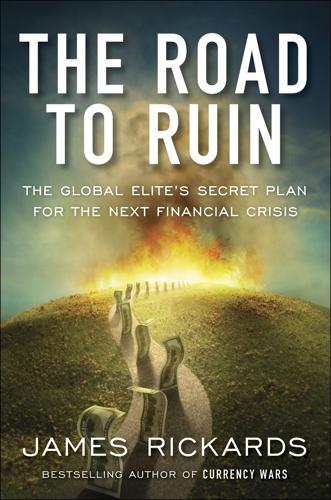
The Road to Ruin: The Global Elites' Secret Plan for the Next Financial Crisis
by
James Rickards
Published 15 Nov 2016
Each exemplifies complexity in action. There is a straight path from Los Alamos to Wall Street. Few have walked that path, as evidenced by the continued dominance of obsolete equilibrium models in central bank policymaking and private risk management. Modern complexity theory began in 1960 with the work of Edward Lorenz, an MIT mathematician and meteorologist. Lorenz was modeling atmospheric flows and discovered that minute changes in initial conditions resulted in wildly different outcomes in flow. In a seminal 1963 paper, Lorenz described his results: Two states differing by imperceptible amounts may eventually evolve into two considerably different states.
…
Likewise, the fact that particular market panics cannot be predicted to the day does not mean robust insights into the magnitude and frequency of panics cannot be derived. They can. Regulators who dismiss these insights ignore hurricane warnings while residing in soon-to-be-inundated low-lying bungalows. Complexity and the related field of chaos theory are two branches of the broader sciences of nonlinear mathematics and critical state systems analysis. Los Alamos has been on the cutting edge of these fields from its start. Significant breakthroughs in the 1970s were computational and built on earlier theoretical work from the 1940s and 1950s by iconic figures such as John von Neumann and Stanislaw Ulam.

Apollo's Arrow: The Profound and Enduring Impact of Coronavirus on the Way We Live
by
Nicholas A. Christakis
Published 27 Oct 2020
* * * When I was fifteen, my father, who had trained as a nuclear physicist, told me a story about a butterfly flapping its wings in China and causing a hurricane offshore from where we lived, in Washington, DC. I did not believe that could happen. This image had first been conjured by an MIT professor of meteorology, Edward Lorenz, on December 29, 1972, at the 139th meeting of the American Association for the Advancement of Science. The details were not exactly the same; Lorenz had used the image of a butterfly flapping its wings in Brazil setting off a tornado in Texas.82 But the image was so powerful that, with a puff, it gave rise to countless expressions about where exactly the butterfly was flapping its wings (China, Brazil), what exactly it caused (storms, tsunamis, people falling off skyscrapers, stock market crashes), and where exactly it had these effects (Japan, London, New York City).
…
In 1963, Lorenz wrote a paper about this titled “Deterministic Nonperiodic Flow.”84 The paper was initially ignored, but it eventually became a classic. Ultimately, it had an impact far outside meteorology, and by the 1970s and 1980s, it was recognized as a foundational effort in the emerging field of chaos theory. A colleague of Lorenz observed that, if his theory was correct, the flap of a seagull’s wings “would be enough to alter the course of the weather forever.” Lorenz later noted, “The controversy has not yet been settled, but the most recent evidence seems to favor the gulls.”85 Eventually, Lorenz shifted to the more poetic metaphor of a butterfly, and he expressed a bit more hesitancy.
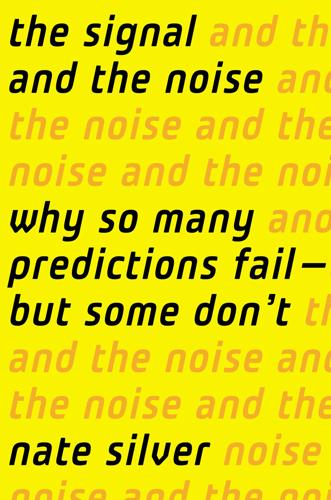
The Signal and the Noise: Why So Many Predictions Fail-But Some Don't
by
Nate Silver
Published 31 Aug 2012
You’ve gotten your hands on a state-of-the-art piece of equipment like the Bluefire. You’ve hired Richard Loft to design the computer’s software and to run its simulations. What could possibly go wrong? How Chaos Theory Is Like Linsanity What could go wrong? Chaos theory. You may have heard the expression: the flap of a butterfly’s wings in Brazil can set off a tornado in Texas. It comes from the title of a paper19 delivered in 1972 by MIT’s Edward Lorenz, who began his career as a meteorologist. Chaos theory applies to systems in which each of two properties hold: The systems are dynamic, meaning that the behavior of the system at one point in time influences its behavior in the future; And they are nonlinear, meaning they abide by exponential rather than additive relationships.
…
Instead of having the barometric pressure in one corner of their grid read 29.5168, for example, it might instead read 29.517. Surely this couldn’t make that much difference? Lorenz realized that it could. The most basic tenet of chaos theory is that a small change in initial conditions—a butterfly flapping its wings in Brazil—can produce a large and unexpected divergence in outcomes—a tornado in Texas. This does not mean that the behavior of the system is random, as the term “chaos” might seem to imply. Nor is chaos theory some modern recitation of Murphy’s Law (“whatever can go wrong will go wrong”). It just means that certain types of systems are very hard to predict. The problem begins when there are inaccuracies in our data.
…
That’s what we’re supposed to do, but it can bite you when you’re wrong.” Bowman’s idea had been to identify the root causes of earthquakes—stress accumulating along a fault line—and formulate predictions from there. In fact, he wanted to understand how stress was changing and evolving throughout the entire system; his approach was motivated by chaos theory. Chaos theory is a demon that can be tamed—weather forecasters did so, at least in part. But weather forecasters have a much better theoretical understanding of the earth’s atmosphere than seismologists do of the earth’s crust. They know, more or less, how weather works, right down to the molecular level.
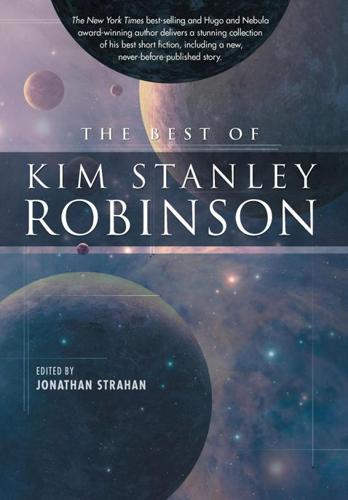
The Best of Kim Stanley Robinson
by
Kim Stanley Robinson
Published 1 Mar 2001
And so on; so that by July 29th, 2045, no human on Earth was the same as those who would have lived if the nomad in Kirgiz had not stepped on the butterfly a century before. This phenomenon is known as the butterfly effect, and it is a serious problem for all other models of historical explanation; meaning trouble for you and for me. The scientific term for it is “sensitive dependence on initial conditions.” It is an aspect of chaos theory first studied by the meteorologist Edward Lorenz, who, while running computer simulations of weather patterns, discovered that the slightest change in the initial conditions of the simulation would quickly lead to completely different weather. So the strong covering law model said that historical explanation should equal the rigor of scientific explanation.
…
So the strong covering law model said that historical explanation should equal the rigor of scientific explanation. Then its defenders, bringing the model into the quantum world, conceded that predictions can never be anything but probabilistic at best. The explanandum was no longer deducible from the explanans; one could only suggest probabilities. Now chaos theory has added new problems. And yet consider: Captain Frank January chose to miss Hiroshima. Ten years later, nuclear weapons were universally banned. Eleven years later, local conflicts in the Middle East erupted into general war, and nuclear weapons were quickly reassembled and used. For it is not easy to forget knowledge, once it is learned; symmetry T, which says that physical laws are the same no matter which way the time arrow is pointed, does not actually exist in nature.
…
After a few weeks of reading I wrote it out pretty quickly. “A Sensitive Dependence on Initial Conditions” After I wrote “The Lucky Strike,” I began to have second thoughts about the postwar alternative history described at the end of that story. Back in DC after our Swiss adventure, I was reading all the new stuff about chaos theory, and some historiography in preparation for the Mars books, and it seemed to me human history might be regarded as a kind of chaotic system. This story was the result. It had a strange form, but it did what I wanted; and “form follows function” is one of the great rules. “Arthur Sternbach Brings the Curveball to Mars” This one I wrote in 1998, but the inspiration for it came from our two years in Zürich (1986–87), when I was a member of the baseball team Züri 85.
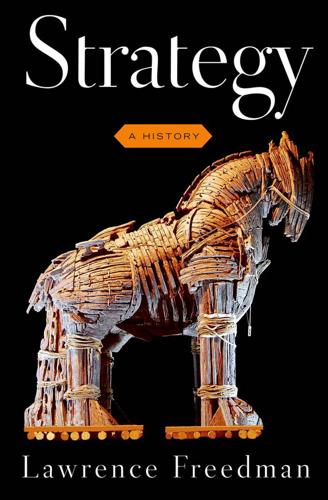
Strategy: A History
by
Lawrence Freedman
Published 31 Oct 2013
The theory was popularized by Edward Lorenz, a diligent meteorologist who discovered the “butterfly effect” while searching for a way to produce more accurate weather predictions. Minuscule changes in his initial input to mathematical calculations for weather predictions could have extraordinary and unpredictable effects on the outcomes. The butterfly effect comes from a 1972 paper by Lorenz to the American Association for the Advancement of Science entitled, “Predictability: Does the Flap of a Butterfly’s Wings in Brazil Set Off a Tornado in Texas?” For a history of chaos theory, see James Gleick, Chaos: Making a New Science (London: Cardinal, 1987).
…
The most important contribution of complexity theory was to underline the importance of considering individual actors as part of complex systems, so that they must always be assessed in relation to their environment, which was adapting to them as they adapted to it. Problems arose with an inability to adapt. “Chaos theory” explained how systems in which cause and effect were supposedly known, and in which strategic calculations might be assumed to be reliable, could nonetheless turn into disorderly systems marked by apparently random effects. This underlined the point that micro-causes could have unexpected macro-effects, and that initial conditions determined later outcomes, even though the resultant dynamic interactions meant that they could not be predicted.
…
E., 181 Campaigns Inc., 437–438 Camus, Albert, 371, 374, 397 Capone, Al, 378–379, 680n32 Capra, Frank, 624–626 Caproni, Gianni, 125 Carey, John, 63–64 Carmichael, Stokely, 393–396, 410 Carnegie Institute of Technology’s Graduate School of Industrial Organization (GSIA), 517 Carnegie, Andrew, 476 Carnot, Lazar, 76–77 Caro, Robert, 446 Carter, Chris, 559 Carter, Jimmy, 443–444, 447–449 Carville, James, 433, 450–451 Castro, Fidel, 399–402 Catechism of a Revolutionary (Nechayev), 276 Cebrowski, Arthur, 217 Celler-Kefauver Act, 497 center of gravity concept (Schwerpunkt), 91–92, 205–209, 239, 243–244 Chamberlain, Neville, 141 Champy, James, 530, 533–534, 536 Chandler Jr., Alfred, 492, 496–498, 539, 545, 559, 608 chaos theory, 198, 658n11 Charles X (King of France), 254–255 Chávez, Cesar, 385–387 Chekhov, Anton, 554 Chernyshevsky, Nicholas, 266–267, 290 Chevrolet. See under General Motors Chia, Robert, 556–557 Chicago (Illinois) 1968 Democratic Convention protests in, 406–408, 417 Back of the Yards Neighborhood Council in, 380 civil rights campaigns in, 354–355, 388–389 community organizing in, 379–380, 382, 387–388 Hull House and, 310–313, 315 immigrant populations in, 312, 314 labor unions in, 380 organized crime in, 378 Pullman strike in, 313–315 sociological studies of, 315, 378–380 stockyards and slaughterhouses in, 312, 379–380 University of, 315, 355, 379–380, 672n39, 672n41 Weber on, 312 Chicago (Sandburg), 300 Chicago School (economics), 515–516, 576, 580 Chimpanzee Politics (de Waal), 4 chimpanzees, behavioral studies of, 3–8 China Communist Party in, 183–185 Cultural Revolution in, 424 guerrilla warfare in, 183–186 Japanese occupation of, 183–184, 186 Kuomintang (nationalists) in, 183–184 Second World War and, 183–184, 186 Warring States period in, 44 Chomsky, Noam, 403 Chong, Dennis, 586–587 Christian Coalition, 452 Chrysler, 481–482, 489 Churchill, Winston, 118, 139–144, 170, 244, 614, 648n14 Civil Disobedience (Thoreau), 347 Civil War in France, The (Marx), 271 civilian-military relationships, 241–243 Class Struggles in France (Marx), 258, 281, 286 Clausewitz, Carl von on center of gravity concept (Schwerpunkt), 91–92, 205–209, 243–244 on coalitions, 90–92 Engels on, 262 on force, 89–90 on friction, 87–89, 93, 164, 211–212, 540 guerrilla warfare and, 179 Jomini and, 85 legacy of, 94, 106, 108, 117–118, 135–136, 160, 170, 181, 203–204, 221, 237, 250, 252–253, 262, 445, 504, 507–508, 608 Liddell Hart on, 135–136, 204 Marx and Engels and, 252 on military intelligence, 89, 228 military strategies of, 85–94, 118–119, 237, 240, 250, 426, 504, 507–508, 540, 613, xii Napoleonic Wars and, 82–83, 90–91, 237, 617 on planning, 88–89, 641n21 on politics, 86–88, 92–94 on popular passions, 97 Tolstoy’s response to, 98 on victory, 92–94, 209, 240 von Moltke (the elder) and, 102–104 Clay, Cassius.